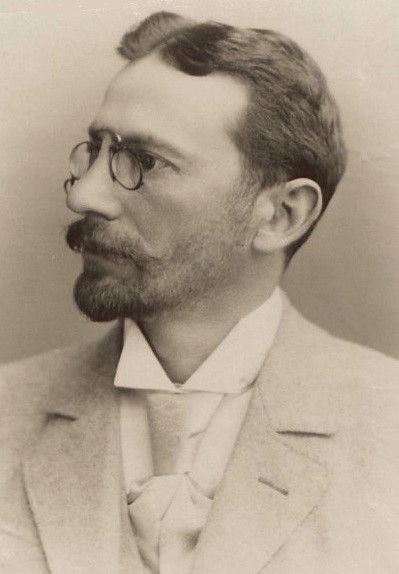
Edward Winter

A selection of the main Chess Notes items which have discussed Siegbert Tarrasch (1862-1934).
Tarrasch’s move 3 Nd2 in the French Defence had been seen in play before Tarrasch himself (born 1862) introduced it. The Illustrated London News of 7 March 1874 gave a game between G.B. Fraser and H.M. Stirling which began 1 e4 e6 2 d4 d5 3 Nd2 c5 4 c3 Nc6 5 Ngf3 Qb6. Staunton in his notes calls 3 Nd2 ‘a novelty not undeserving attention’ but recommends 5...Nf6 instead of 5...Qb6.
(43)
The Tarrasch quote ‘Tempo is the soul of chess’ was given on page 387 of Kings, Commoners and Knaves from page 56 of Tarrasch’s Schachzeitung, 15 November 1933. The original German:
‘Wie ich schon öfters erklärt habe: das Tempo ist die Seele des Schachspiels.’
See too The Soul of Chess.
‘Deutsches Wochenschach of Berlin has been sued by Dr Tarrasch for reprinting the game between Dr Tarrasch and Walbrodt, which the former had annotated for a Norwegian paper. H. Ranneforth, the editor, explains in a recent issue of the German weekly that this particular game had been reprinted at the request of A. Lindström, chess editor of the paper referred to. The suit in question is a decidedly novel one and the outcome will be awaited with keen interest on the part of chess players everywhere and especially so by chess writers.’
Source: American Chess Bulletin, November 1915, page 219.
This account was based on what appeared on page 266 of Deutsches Wochenschach, 19 September 1915. On page 358 (19 December 1915 issue) the German magazine reported, ‘Das daraufhin eingeleitete Vorverfahren ist von der Staatsanwaltschaft jetzt eingestellt worden’, and we shall be grateful if a reader can clarify exactly how the case eventually ended.
(1483)
Hans-Georg Kleinhenz (Munich, Germany) draws our attention to a paragraph on Leipzig, 1888 in Dreihundert Schachpartien, where Tarrasch wrote:
‘In this tournament, I myself accomplished the task of finishing dead last among the eight masters; I lost five games and won only two.’
In fact, Tarrasch’s two points put him in seventh position. Minckwitz game eighth and last with 1½ points. Our correspondent points out that this error has been copied by, for instance, Brinckmann in Siegbert Tarrasch Lehrmeister der Schachwelt (Berlin, 1963).
It cannot be often that a master claims to have done worse than was the case.
(1524)
Tarrasch is yet one more leading figure whom chess history paragraphists have caricatured (‘stubborn’, ‘dogmatic’, etc.). Apart from his own brilliant books, there is little of value about him for the chess bibliophile, although Reinfeld’s 1947 book is quite good.
Tarrasch’s magazine ran from October 1932 to March 1934, and is full of high-quality material. A complete run in one volume was published by Olms in 1984.
(1611)
Readers of Arrabal’s Echecs et mythe (Paris, 1984) may be surprised to learn on page 24 that Tarrasch died in Monaco. True enough, that it is what is stated on page 494 of the Dizionario Enciclopedico degli Scacchi, but ‘Monaco’ in Italian can also mean Munich.
(1639)
When was the Tarrasch Defence to the Queen’s Gambit (1 d4 d5 2 c4 e6 3 Nc3 c5) first played? The earliest example we have found so far is Richter-Niemeyer, West German Hauptturnier (see page 148 of Die Schachcongresse zu Düsseldorf, Köln u. Frankfurt a/M., published in Leipzig in 1879). This minor game, a draw, was played in Frankfurt in 1878. Our bid for the earliest mention of the moves: page 483 of Dufresne’s Handbuch des Schachspiels (Berlin, 1863). After 1 d4 d5 2 c4 e6 3 Nc3 Nf6 Dufresne states that Black can also play 3...c5 4 e3 Nf6 5 Nf3 Nc6 6 a3 a6 7 b3 b6 8 Bb2 Bb7 9 cxd5 exd5 10 Bd3 cxd4 11 exd4 Bd6 12 O-O O-O with a level game.
(1657)
Hans-Georg Kleinhenz (Munich, Germany) quotes an earlier game in which the Tarrasch Defence was used, by an unknown player. The concluding attack is not chess literature’s most subtle and artistic:
L. Smigielski – N.N.
Berlin, 1854 (?)
Queen’s Gambit Declined
1 d4 d5 2 c4 e6 3 Nc3 c5 4 cxd5 exd5 5 dxc5 d4 6 Na4 Bxc5 7 Nxc5 Qa5+ 8 Bd2 Qxc5 9 Rc1 Qf5 10 Nf3 Qd7 11 Nxd4 Ne7 12 e3 O-O 13 Bc4 Nbc6 14 Bc3 a6 15 a3 Nf5 16 Nxf5 Qxf5 17 O-O Be6 18 Bd3 Qg5 19 f4 Qd8 20 f5 Bd5 21 f6 g6 22 Qg4 Be6 23 Qh4 h5 24 Qg5 Kh7 25 Qxh5+ Kg8 26 Qh6 and mates in two moves.
Source: Deutsche Schachzeitung, October 1854, page 386.
(1717)
We now note that 3…c5 was described as ‘best’ in a book published in 1874: the second edition of Chess Openings by F.W. Longman (page 63).
Although Tarrasch himself played 3…c5 in the 1880s, Bernd Graefrath (Essen, Germany) draws our attention to the master’s comments on the Queen’s Gambit as republished from the Frankfurter Schachblatt on page 300 of the Hastings, 1895 tournament book edited by Schallopp. Playing Black against Steinitz, Tarrasch replied to 1 d4 with 1…f5 and commented:
‘Given that I am aware of no satisfactory defence to the Queen’s Gambit, I tried the [Dutch Defence] once – and never again.’
Readers with a database will find that Tarrasch did not quite adhere to his vow regarding 1 d4 f5.
(2294)
In late 1993 Caissa Editions published St Petersburg 1914 International Chess Tournament by Siegbert Tarrasch, translated by Robert Maxham. Tarrasch’s excellent annotations have been supplemented with the notes of Georg Marco and much material from other sources.
Despite rather more editorial rough edges than one would expect, the book is a good record of one of the greatest tournaments, particularly when compared with AVRO 1938 by Arthur S. Antler. Background prose in the latter amounts to little more than quotes from well-known books, whereas the annotations even ignore essential works such as Euwe’s tournament book in Dutch.
An example of Tarrasch’s colourful prose is his explanation on page 177 as to why, against Alekhine, he played 3 e3 after 1 d4 d5 2 c4 e5:
‘On principle, I accept no gambit as the first player, for if I must defend myself as the second player and should also defend myself as the first player, when should I then really enjoy the pleasure of attack?’
(2018)
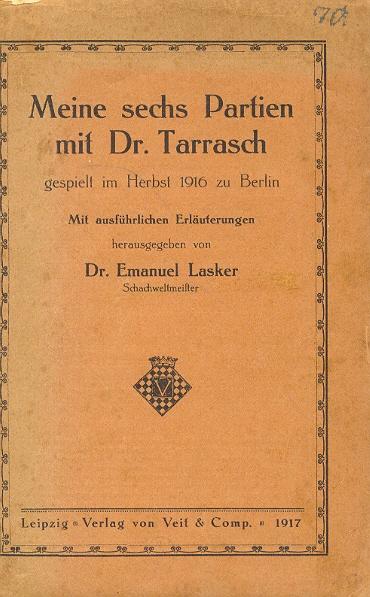
Contrary to claims by Koltanowski, the 1916 match between Lasker and Tarrasch was not for the world championship title. See too, on this topic, the various falsehoods of Eric Schiller.
A rare case of a master finding himself on the sharp end of Legall’s trap:
V. Sjöberg – Siegbert Tarrasch (simultaneous?)
Skifarp [modern spelling: Skivarp], 24 May 1911
Dutch Defence, Staunton Gambit
1 d4 f5 2 e4 fxe4 3 Nc3 Nf6 4 f3 c5 5 d5 e5 6 dxe6 d5 7 fxe4 d4 8 e5 Nd5 9 Ne4 Bxe6 10 Nf3 Nc6 11 Bd3 Bg4 12 O-O Nxe5
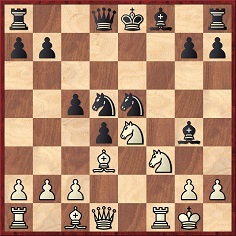
13 Nxe5 Bxd1 14 Bb5+ Ke7 15 Bg5+ Ke6 16 Bxd8 Kxe5 17 Ng5 Bh5 18 Rae1+ Ne3 19 Bc7+ Bd6 20 Ba5 Raf8 21 Rxe3+ dxe3 22 Bc3+ Kd5 23 Bxg7 Bxh2+ 24 Kxh2 Rxf1 25 Bxf1 Rg8 26 Nxh7 Rxg7 27 Nf6+ Ke5 28 Nxh5 Rf7 29 Ng3 Kf4 30 Bd3 a6 31 a4 Rc7 32 b3 Rc6 33 Ne2+ Kg4 34 Kg1 Rf6 35 Be4 Rf7 36 Nc3 b6 37 Bf3+ Kf4 38 Nd5+ Ke5 39 Nxe3 Resigns.
Source: Tidskrift för Schack, September-October 1911, pages 155-156, which contained brief notes by the winner.
(2133)
Pages 323-324 of Kings, Commoners and Knaves included the following contribution from Richard Forster (Winterthur, Switzerland) regarding Rubinstein v Tarrasch, Carlsbad, 1923:
‘There is an error in several monographs on Rubinstein (viz. the ones by Kmoch, Glatman and Donaldson/Minev). At move 38 in the game Rubinstein v Tarrasch, Carlsbad, 1923 this position occurred:
Kmoch writes that he cannot believe that 38 Qc4, which is given in contemporary sources, is the right move, because it allows 38 ... Qxe3. Therefore he decided that the move actually played must have been 38 Qc3. Since my analysis proves that White wins a piece after 38 Qc4 Qxe3 39 Qb4!! (39...Qe2 40 Rxb8 Qh5+ 41 Kg2 Qe2+ 42 Kg1 Dd1+ 43 Kf2! or 40...Qf1+ 41 Bg2 Qf5+ 42 g4 Qd3+ 43 Kh4!), I don’t think there is any justification for Kmoch’s altering the game course which has been copied widely.’
It should be noted that on page 97 of Rubinstein Gewinnt! Hans Kmoch wrote after 38 Qc3:
‘Die Bücher und Zeitschriften geben hier übereinstimmend, jedoch ohne Anmerkung 38 Dc4 an. Es is jedoch nicht zu sehen, warum Weiß den Bauer[n] e3 geopfert und Schwarz ihn nich genommen haben sollte.’
This was mistranslated on page 121 of Rubinstein’s Chess Masterpieces (Philadelphia, 1941) as:
‘The books and the newspapers unanimously recommend 38 Q-B4, but without analysis: However, it is not apparent why White sacrifices the pawn at K3, and why Black does not capture.’
In reality, Kmoch was reporting that all the publications had given 38 Qc4 as the move played, not as a recommendation. In short, he unjustifiably altered the score of the game.
One curious way in which history repeats itself is in the practice whereby the quality of world championship match play is run down by contemporary critics but aggrandized by posterity. For example, page 5 of the Chess Amateur, October 1908 quoted from the Daily Mail:
‘The match in progress between Dr E. Lasker and Dr S. Tarrasch for the chess championship of the world creates in the minds of many chessplayers a feeling of doubt whether the pre-eminence suggested by such a title as “champion” ought justly to be the award of either player in this contest.
In the eyes of expert analysts only a small proportion of the nine games played up to the present moment can be called first-class chess – except by the players themselves.
The monotonous repetition of the Ruy López Opening, varied only by the equally tiresome and uninteresting French Defence, exhibits a want of enterprise disappointing to those who regard chess as a game par excellence of resource, imagination, and self-reliance; while the blunders committed on both sides in several of the games are blemishes which render them worse than useless as studies or models.’
In contrast, here is a remark from page 3 of the 1951 world championship book by W. Winter and R.G. Wade:
‘… the play between Lasker and Tarrasch has generally been considered the best seen in any match for the world championship.’
To conclude here with a brief non-chess matter, various quotation books attribute the observation ‘History repeats itself; historians repeat one another’ to Philip Guedalla, in his 1920 work Supers and Supermen. We note, however, that the poet Rupert Brooke (1887-1915) gave the epigram as his own invention in a letter to Geoffrey Keynes dated 4 June 1906.
(2372)
From pages 6-7 of Chess Traps, Pitfalls, and Swindles by I.A. Horowitz and F. Reinfeld (New York, 1954):
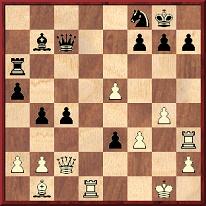
‘Teichmann was blind in one eye, but he had a keen sight of the board just the same. Having given up the exchange in return for a pawn, he is somewhat at a material disadvantage. After a careful study of the position he played 1...Rg6.
Tarrasch, at that time (1907) one of the world’s greatest masters, annotated this game for a newspaper column. Ridiculing Teichmann’s move, he pointed out that “of course 1...Qxe5 was the right move. If then 2 Qxc4 Rd6! 3 Rxd6?? e2! and Black wins on the spot!” Tarrasch added a number of sarcastic remarks and some involved variations which we need not go into here. His note was copied in columns and magazines the world over, with no dissenting voice.
Only when the book of the tournament (Carlsbad, 1907) appeared several years later did the chess world find out what Teichmann had seen with his one good eye. The fact is that [the above diagram] is the setting for a particularly devilish pitfall that Vidmar had set for his opponent. Tarrasch quite overlooked that 1...Qxe5?? is a fearful blunder.’
Horowitz and Reinfeld added that the reply would be 2 Qxh7+ Nxh7 3 Rd8+ Nf8 4 Rh8+ Kxh8 5 Rxf8 mate, but their narrative is incorrect, for the queen sacrifice was pointed out shortly after Tarrasch’s note appeared in the Deutsche Schachzeitung, which was three years before the tournament book was published.
The game was played on 7 September 1907, and Tarrasch’s annotations in the Berliner Lokalanzeiger of 15 November 1907 were given on pages 83-84 of the March 1908 Deutsche Schachzeitung.
The next issue of the magazine (i.e. April 1908, page 132) had the following:
‘Graz (F. Poljanec). Sie setzen S. 84 rechts, 26. Zug, nach Dc7xe5 (von Dr. Tarrasch empfohlen und von Schlechter approbiert) in fünf Zügen mat: 27 Dh7+: Sh7: 28 Te6+ [sic] usw. Uns wundert das nicht: Denn: Aliquando dormitat bonus Homerus!’
It may be added that, as shown by announcements in the Deutsche Schachzeitung and Wiener Schachzeitung, the Carlsbad, 1907 tournament book was not published until 1911. A number of catalogues, including those of the Cleveland and Hague libraries, give an incorrect publication year, as does the 1983 Olms reprint. The Vidmar v Teichmann game was on pages 301-303. See also page 73 of Goldene Schachzeiten by Vidmar.
We have found nothing to support Horowitz and Reinfeld’s assertion that Tarrasch’s faulty note ‘was copied in columns and magazines the world over’. In any case, Tarrasch later gave the mating line in his book Die Moderne Schachpartie (page numbers vary according to the edition).
(3711)
A selection of quotes about Tarrasch given on page 387 of Kings, Commoners and Knaves:
‘In the success of Tarrasch, Steinitz’s method of play has achieved its greatest triumph. But the scholar is acting more faithfully on the precepts of the teacher than the master himself, who will often forget his own teachings and adhere to crotchety lines of play in the openings, a thing which Tarrasch never does.’
Gunsberg, in the Evening News, quoted on page 410 of the October 1890 BCM.
‘What he was in the ’80s and ’90s he [Tarrasch] is now and seemingly ever will be, one of the best. Only this and nothing more. He is a vastly learned chess master, which quality, coupled with stamina worthy of a Marathon runner, renders him superior to everything but the pelting of downright genius.’
Napier in the Pittsburg Dispatch, quoted on page 127 of the July 1907 American Chess Bulletin.
‘The greatest chess leader of all times, past and present.’
Spielmann on Tarrasch, in an interview on page 12 of the Chess World, 1 October 1932.
Some remarks by Tarrasch were given on page 388 of Kings, Commoners and Knaves:
‘... there are some masters, unfortunately notable among them being Marshall, who are quite devoid of any sense of tact, and who make it a matter of principle to continue playing with stupid obstinacy in the most hopeless positions. Such procedure makes them themselves look ridiculous, and is degrading to the tourney as a spectacle.’
Tarrasch expressed these sentiments in Die Schachwelt, and they were reported on page 204 of the May 1912 BCM. He was referring to his 90-move win against Marshall at San Sebastián, 1912, in which the American fought out an ending with a rook against rook, bishop and two pawns.
From pages 396-397 of Kings, Commoners and Knaves:
A feature by C.J.S. Purdy on pages 261‑262 of Chess World, December 1963 entitled ‘How to Talk Like Tarrasch’:
‘We have no doubt that Oscar Wilde brought off a lot of his sallies by trying how various trite sayings sounded back to front – such a lot of his efforts are on the pattern of ‘Work is the curse of the drinking classes’.
Tarrasch’s favourite pattern is seen in:
‘It is not enough to be a strong player: one must also play strongly.’
‘It is not enough to have a won game: one must also win it.’Well worn as these sayings are, most players never completely realize their importance. However, it would be easy to continue on in this strain with:
‘To win, it is not enough that your opponent be a weak player: he must also play weakly.’
‘It is not enough to sacrifice: one must also sacrifice enough.’
‘It is not enough to write down one’s games: one must also write them up.’
‘It is not enough to compose a maxim: one must also be Tarrasch.’
That last one is proved thus. Some years ago a contemporary quoted some sayings allegedly by Tarrasch. We thought they sounded too frivolous for Tarrasch, and after long pondering, realized that we ourselves had written them in a short humorous skit in some old issue of the ACR. There must have been something said therein about Tarrasch which our contemporary misunderstood. Now, nobody else in the world thought those things worth quoting – and rightly so. But one person thought they were by Tarrasch, and that made them extremely witty ...
D.M. Spackman [sic], the American novelist, chess theoretician and correspondence expert, made up a much better parody of Tarrasch than any of ours. His is:
“Chess, like gunfire, like love, has the power to keep men quiet”.’
Did Siegbert Tarrasch have a middle name? Pages 254-255 of The Best In Chess by I. Horowitz and J.S. Battell (New York, 1965) twice refer to ‘S.G. Tarrasch’, although there may well have been confusion with Tartakower.
Unsurprisingly, Koltanowski has gone his own way, with ‘Siegfried’ Tarrasch (on page 81 of his book TV Chess, published in 1968). Kolty also called him ‘Siggy’.
(2278)
As noted on page 234 of A Chess Omnibus, a chess book by D.A. Mitchell referred to ‘Dr Sigmund Tarrasch’.
C.N. 2278 (see page 234 of A Chess Omnibus) asked whether Siegbert Tarrasch had a middle name. Richard Forster now writes to us:
‘The answer is apparently yes: Kurt. See the article “Unser Landesverband” by Dr. Klaus-Norbert Münch on pages 95-105 of Der Bayerische Schachbund. Aufbruch in das dritte Jahrtausend edited by A. Diel (Beyer Verlag, 2000). A footnote on page 99 reads:
“Dr. Tarrasch führte den zweiten Vornamen Kurt. Dass er davon auch Gebrauch machte, ist aus einem überlieferten Geburtstagsgruss vom 11. Dezember 1920 an seine spätere zweite Frau Gertrud Schroder zu ersehen.”’
(3102)
From Manuel Fruth: Unterhaching, Germany
‘In fact Tarrasch’s only forename was Siegbert, but with his family and close friends he regularly signed himself “Kurt” or “Curt”.’
Mr Fruth, who is working with the author Wolfgang Kamm on a large biography to mark the 70th anniversary of Tarrasch’s death, has kindly sent us corroborative documentation, including the master’s birth certificate.
[As shown below, Siegbert Tarrasch Leben und Werk by W. Kamm was published in 2004.]
(3210)
Addition on 24 September 2024:
Page 53 of the August 1898 American Chess Magazine referred to ‘Dr Sigismund Tarrasch’.
Mr Fruth also raises with us the question of whether Tarrasch held a doctorate:
‘As you know, German sources stated in 1885 and 1886 that Tarrasch had become a doctor. Wolfgang Kamm and his research assistant Alfred Schattmann have done their utmost to find out whether Tarrasch really did receive a diploma. (They wrote to all the German universities and to the German Doctor Chambers, and they even tried to find out in Breslau.) No clues have been traced there or in the 1885/86 yearbook of the German Medical Association.
However, they did find the following card regarding a medical dissertation:
“Diss. med. Siegfried (nannte sich später Siegbert) Tarrasch: “Ueber die Complikation der Hauptsymptome des Ileothypus und der Meningitis cerebrisonalis.” Aus der medicinischen Abtheilung des Herrn Professor Rosenbach zu Breslau. Inaug Diss. Breslau 1889, Proskauer (40 S., 1 Bl.)”
From the appendix to that work they learned that this Siegfried Tarrasch was born on 23 February 1864 in Gross-Wartenburg, Michael Tarrasch (a businessman) being his father. (Siegbert Tarrasch had been born on 5 March 1862.) The Humboldt University in Berlin also mixed up Siegbert with Siegfried.
Tarrasch himself did not state that he had acquired a doctor’s diploma. His marriage certificate (May 1887) listed no doctor’s title. But he loved to be called ‘Doctor’ and gave himself the title.
The forthcoming book gives a quotation from the renowned Brockhaus encyclopedia (1908), “Medical doctors are called doctors in regular life, even if they have not achieved that title.”’
(3211)
Subsequent discoveries about Tarrasch’s doctorate were reported by Michael Negele.
This illustration appeared on page 60 of A Book of Chess by C.H.O’D. Alexander (London, 1973):
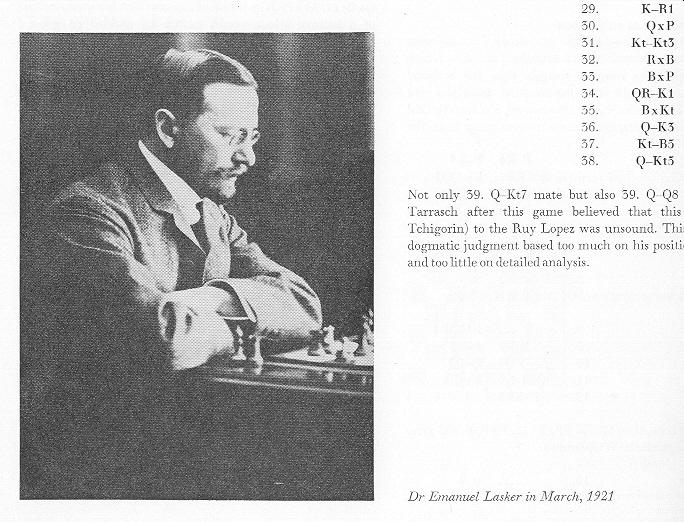
In reality, both parts of the caption (‘Dr Emanuel Lasker’ and ‘in March, 1921’ are wrong. As noted on page 315 of A Chess Omnibus, the player is Tarrasch. We add here that the photograph was the frontispiece of Schachjahrbuch für 1908 by L. Bachmann (Ansbach, 1909), whose caption correctly identified the two masters and noted that the picture had been taken in Munich during their 1908 world championship match.
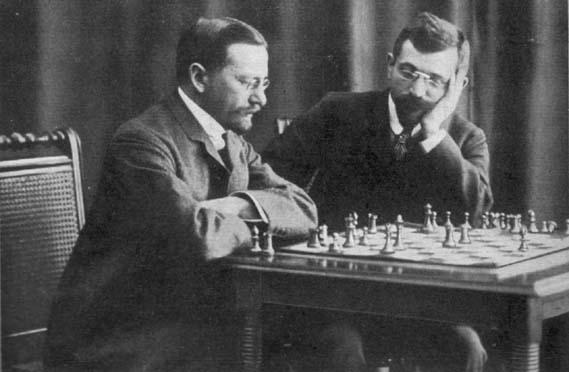
(4221)
As also mentioned in our Kingpin article in 2000 (see too page 315 of A Chess Omnibus), the same mistake occurred on pages 64 and 66 of Chess by Paul Langfield (London, 1978).
See also Chess: Mistaken Identity.
Tartakower’s oft-quoted commentary on Lasker, Capablanca and Alekhine (see, for instance, pages 3, 18 and 29 of the Baden-Baden, 1925 tournament book published by Caissa Editions in 1991) was presented as follows by Koltanowski on page 52 of the Chess Digest Magazine, March 1972:
‘Tartakower, when Alekhine was stunning the chess world in 1930-33, made this witty remark: “Lasker was world champion, Capablanca is world champion, and Alekhine plays like a world champion.’
Since Alekhine became world champion in 1927, this is just another example of Koltanowski’s difficulty with elementary facts.
(4279)
From the previously mentioned article by the pitifully undependable George Koltanowski, on page 52 of the Chess Digest Magazine, March 1972:
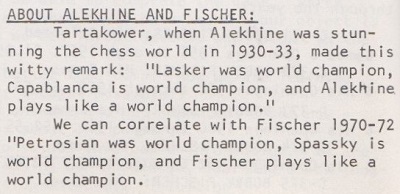
Koltanowski’s reference to Tartakower was given in C.N. 4279, which pointed out that in the 1930s Capablanca was no longer the world champion. We gave mid-1920s references for the remark, and below is what Bernhard Kagan wrote, without identifying the speaker, on page 344 of Kagans Neueste Schachnachrichten, 1 July 1925:

A similar observation (‘Capablanca has the title, Lasker has the results, but only Alekhine has the style of a real world champion’) appeared in an article by Tartakower in issue 4-5 of Shakhmaty, 1925. It was reproduced on page vii of the Baden-Baden, 1925 tournament book by N.I. Grekov (Moscow, 1927):

Elsewhere, Tarrasch has been named in place of Tartakower. From pages 176-177 of The Great Chess Masters and their Games by Fred Reinfeld (New York, 1952):
‘It was the St Petersburg International Tournament [in 1914] that catapulted Alekhine to world fame as a grandmaster and not merely a brilliant player. The main object of attention was of course the duel between Lasker and Capablanca, but Alekhine came very near to stealing the show by thrusting Rubinstein, Nimzowitsch and Bernstein aside and then outpacing Tarrasch and Marshall and coming a fine third to Lasker and Capablanca. It was in this famous tournament that Alekhine first displayed that white-hot fusion of logic and fantasy that was to enthrall chessplayers for three decades; that was to prompt Tarrasch to declare later on that “Lasker used to be the world champion, Capablanca is the world champion, but Alekhine plays as a world champion should play.”’
Given that Alekhine, aged 21, finished well behind Lasker and Capablanca at St Petersburg, 1914 (by a margin of 3½ points and 3 points respectively), it is odd to suggest that he ‘came very near to stealing the show’. What Reinfeld termed ‘a fine third’ was called ‘a poor third’ in the entry on Alekhine in the Oxford Companion to Chess (1984 and 1992 editions) and ‘a bad third’ on page 46 of Championship Chess by P.W. Sergeant (London, 1938).
An earlier claim that Tarrasch made the remark about the three world champions was published on page 86 of Chess World, 1 May 1946, in an article, ‘Glimpses of Alekhine’, by M.E. Goldstein:
‘Before Alekhine defeated Capablanca, Dr Tarrasch, a man not given to fulsome praise, wrote that “Lasker was world champion, Capablanca is world champion, but Alekhine plays as a world champion should play”. To the man in the street, Alekhine was the man to watch – the sacrifice of the queen for a mating attack represented the triumph of mind over matter, which everyone could appreciate. On the other hand, the positional cavortings of a Capablanca or a Rubinstein were beyond the ken of ordinary men.’
When presenting Réti v Alekhine, Baden-Baden, 1925 (under the heading ‘The Gem of Gems’) on pages 110-111 of the 1 June 1946 issue of Chess World, C.J.S. Purdy wrote:
‘We disagree with Mr Goldstein when he says that Alekhine’s chess is easier for the ordinary player to understand than Capablanca’s. Capablanca’s moves may often surprise, but usually their logic is soon apparent after examination. But many of Alekhine’s moves depend on some surprise that comes far too many moves ahead for an ordinary mortal to have the slightest chance of foreseeing it. Alekhine’s chess is like a god’s. One can revere, but never hope to emulate.’
(9384)
Just received: an 877-page hardback Siegbert Tarrasch Leben und Werk by Wolfgang Kamm (published by Manuel Fruth, Unterhaching, Germany). Its most impressive features are detailed research and extensive documentation, i.e. serious, academic treatment of the kind few chess masters have been accorded. With Mr Fruth’s permission we reproduce here, from page 54, one of the many photographs that were new to us: Tarrasch at the age of 18 (Berlin, 1880).
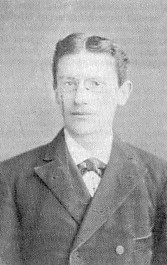
(3462)
Below is the entry for ‘Remismonde’ on page 171 of Dictionary of Modern Chess by Byrne J. Horton (New York, 1959). Any information confirming, refuting or complementing the entry will be gratefully received.
‘A term coined by Dr Tarrasch (1862-1934) which he applied to [Carl] Schlechter of Vienna. Schlechter was known to have terminated many of his games as drawn games. Hence, Dr Tarrasch referred to him as the “Master of the Vienna Remismonde”.
Literally, “Remismonde” is a compound French word. Remis in chess terminology means a draw. (See Dictionnaire de la Langue Française, by E. Littré, Paris, 1883.) Monde means world. There is no completely satisfactory or precise explanation of this compounded word. Dr Felix Pollak of Northwestern University, a passionate chessplayer from Vienna, offered the following explanation. He wrote: “I believe it is simply a play on words, coining a parallel expression to ‘demi-monde’ (denoting a lady of the ‘half-world’ i.e. of easy virtue). Hence, calling Schlechter the Master of the Remismonde denotes Schlechter to be king of the drawing world, the Master of the Vienna ‘Grand-Master-Drawers’.” Mr Hans Kmoch, the renowned Secretary and Manager of the famous Manhattan Chess Club, concurs with this explanation.’
(4367)
We now note the following on page 63 of the August 1898 American Chess Magazine:
‘Personally, he [Tarrasch] is a gentleman of the world, with the most elegant of manners; genial, sarcastic, witty and sharp-tongued. “Ah!”, he exclaimed once, when the dear Viennese again brought about a “draw”. “I am here in Vienna among the ‘Remismonde’.” “It is not sufficient to be a good chessplayer, one must play good chess”, is one of his favorite sayings.’
The writer was Armin Friedmann in Pester Lloyd, 20 or 21 June 1898. The original German version was given on page 346 of the Vienna, 1898 tournament book:
‘Persönlich ist Dr Tarrasch ein Weltmann von feinsten Manieren, geistreich, boshaft, witzig, scharfzüngig. “Ach ich verkehre hier nur mit der Remismonde”, seufzte er jüngst, als die lieben Wiener nach ihrer Gewohnheit sich wieder einmal ausglichen. “Es ist nicht genug, dass man ein guter Spieler ist, man muss auch gut spielen”, lautet einer seiner Aussprüche.’
Spoof variants on the ‘good chessplayer’ dictum were discussed on pages 396-397 of Kings, Commoners and Knaves, but what earlier citations can be found for Tarrasch’s own words?
(4868)
João Pedro S. Mendonça Correia (Lisbon) asks about the accuracy of reports that Tarrasch converted from Judaism to Christianity.
His conversion is documented on pages 357-359 of Siegbert Tarrasch Leben und Werk by Wolfgang Kamm (Unterhaching, 2004). The opening sentence of the section reads:
‘Am 28. Mai 1909 tritt Siegbert Tarrasch, der Jude, zum christlichen Glauben über.’
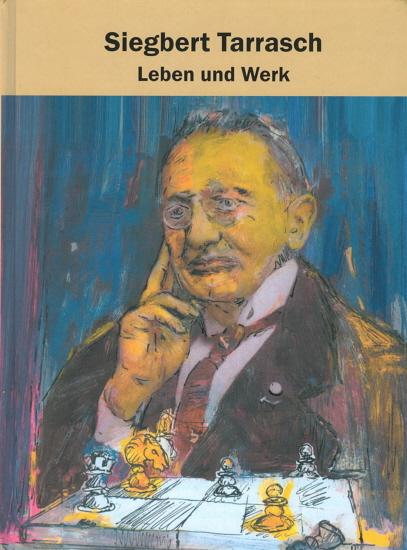
Kamm’s 877-page book (see C.N. 3462) offers by far the most detailed biographical treatment of Tarrasch but has received remarkably little attention.
(5997)
João Pedro S. Mendonça Correia writes:
‘Does anyone have an explanation for the fact that, despite his stature in the chess world, Tarrasch was not attacked by the author of the infamous 1941 articles on Jewish and Aryan chess? I do not believe that his (now confirmed) conversion in 1909 from Judaism to Christianity (C.N. 5997) would be a satisfactory explanation.’
(6067)
The account on pages 357-359 of Siegbert Tarrasch Leben und Werk by Wolfgang Kamm (Unterhaching, 2004) stated that on 28 May 1909 Tarrasch converted from Judaism to Christianity. Have further details come to light since 2004?
(12196)
Page 382 of Kings, Commoners and Knaves quoted from page 79 of The Game of Chess by Siegbert Tarrasch (London, 1935):
‘Mistrust is the most necessary characteristic of the chess-player.’
It may be added that page 51 of a later (1994) English edition of Tarrasch’s book, edited by Lou Hays and David Sewell, had:
‘Mistrust is the necessary characteristic of a good chessplayer.’
Moreover, the original German edition (Berlin, 1931, page 110) was slightly different from both translations:
‘Mißtrauen ist eine der notwendigsten Charaktereigenschaften des Schachspielers.’ [‘Mistrust is one of the most necessary characteristics of the chess-player.’]
(5684)
Leonard McLaren (Onehunga, New Zealand) is seeking a scholarly, reliable biography of Tarrasch in English, and asks whether a translation is planned of a book we praised in C.N.s 3462 and 5997, Siegbert Tarrasch Leben und Werk by Wolfgang Kamm (Unterhaching, 2004).
It is certainly deserving of an English edition. The same applies to a work mentioned in C.N. 3897: Vabanque Dawid Janowsky 1868-1927 by Daniel Ackermann (Ludwigshafen, 2005).
(6803)
From page 158 of CHESS, April 1940 (in a review of Reinfeld’s book Practical End-Game Play):
‘Mr Reinfeld is an attractive and industrious writer but there are certain faults of which he must rid himself to become a great one. It is in all kindness that we enumerate them. The first is bumptiousness. He is too prone to throw his weight about from the safe retreat of armchair analysis. The amateur reader, hearing him denounce Tarrasch for “gross blunders”, Schlechter for “superficial appraising of the position”, Euwe for “grossly miscalculating”, Tartakower for “lack of insight” and so forth can hardly fail to ask, with initial admiration: “Who is this genius who can pierce through the armour of the great?” Mr Reinfeld’s playing record comes as a shock. The discovery of occasional “gross errors” in his writings, committed not under the nervous tension of tournament play but in the calm of literary composition and overlooked in successive proof-corrections and the realization that the analysis on which he bases his denunciations is rarely his own (as his own meticulous acknowledgments reveal) add to the disillusionment. Such a disillusionment is unnecessary and pointless. We judge a writer as a writer, a player as a player – until the writer obtrudes his own personality on us by such harsh and pointless criticisms.’
This passage brings to mind criticism of Tarrasch by Irving Chernev, on the inside front cover of the January 1956 Chess Review:
‘Mistakes? Rarely did he make one. But here he pulls a boner that is surely the grandmother of all the blunders ever perpetrated on a chessboard.
List to this tale of woe:
It was in the days of his youth, when all the world was still playing wild gambits. Tarrasch had given a piece for a speculative attack, and his opponent was having a rough time of it. The position had been simplified by an exchange of queens, but the defense was still in trouble. Then, to add to the confusion, Tarrasch sacrificed a bishop. In return, he threatened a tremendous discovered check. It was just a matter of moving his knight to the right square.
But now comes a strange spectacle: that of the great master floundering around, trying to [find] the one discovered check which wins. Tarrasch missed the right idea – not once, but four times in succession. His knight hopped about from square to square and when, at long last, Tarrasch succeeded in winning the game it was with the wrong discovered check.’
The game-score was then given:
Siegbert Tarrasch – Hermann Hirschler
Nuremberg, 1894
King’s Gambit Accepted
1 e4 e5 2 f4 exf4 3 Nf3 g5 4 h4 g4 5 Ne5 d6 6 Nxf7 Kxf7 7 Bc4+ Kg6 8 d4 Be7 9 Bxf4 Nf6 10 h5+ Kg7 11 Nc3 Nc6 12 e5 dxe5 13 h6+ Kf8 14 dxe5 Qxd1+ 15 Rxd1 Nd7 16 O-O Ke8 17 Nd5 Bc5+ 18 Kh1 Bb6 19 e6 Nde5 20 Nf6+ Ke7 21 Bg5 Nxc4
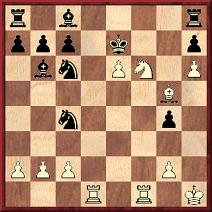
(Chernev: ‘At this point Tarrasch has a win. He pointed it out clearly and concisely long after the game was played [i.e. mate in four with 22 Nh5+]. Tarrasch did not admit that he overlooked the win. Instead, he said that he wanted to confuse his opponent psychologically. He would demonstrate by several knight maneuvers that Black dare not capture the e-pawn and then, when he was thoroughly convinced, Tarrasch would swindle him, playing a variation in which Black must take the pawn to save himself – but is too scared to do so.’) 22 Nxg4+ Ke8 23 Nf6+ Ke7 24 Nd5+ Ke8 25 Nf6+ Ke7 26 Nd7+ Ke8 27 Nf6+ Ke7 28 Ng8+ Ke8 (Chernev: ‘And here indeed Black can save himself by taking the pawn: White has no plausible, winning line.’) 29 Rd8+ Nxd8 30 Rf8+ Kxf8 31 e7+ Resigns.
Chernev’s annotations were based on Tarrasch’s own remarks on pages 391-392 of Dreihundert Schachpartien (Gouda, 1925). See also pages 340-341 of Tarrasch’s Best Games of Chess by F. Reinfeld (London, 1947).
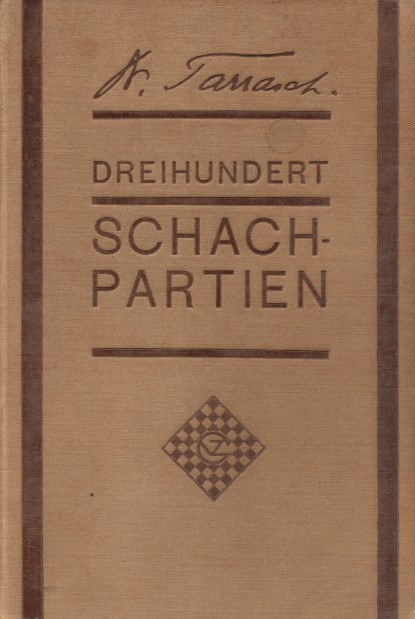
Whether the game was more than an offhand encounter is unclear, but it seems to us a sizeable exaggeration by Chernev to accuse Tarrasch of perpetrating ‘a boner that is surely the grandmother of all the blunders ever perpetrated on a chessboard’.
As regards the occasion, Chernev, who put ‘Nuremberg, 1894’, said that the game was won by Tarrasch ‘in the days of his youth’, whereas he was about 32 at the time. Some databases unaccountably state that the game was played in Berlin in 1880.
(3829)
In C.N. 3225 we commented:
‘It is hard to imagine a more defective area of chess literature than quotations. Writers copy from one another all kinds of unverified or unverifiable phrases without any explanation, context or source.’
Here is a further example. Page 34 of Gladiatoren Ante Portas by Volker-M. Anton and Fritz Baumbach (Magdeburg, 2003) ascribes the following quote to Leo Tolstoy:
‘Ich bedauere jeden, der das Schachspiel nicht kennt. Bringt es schon dem Lernenden Freude, so führt es den Kenner zu hohem Genuss.’
English translation: ‘I pity anyone who has no knowledge of chess. While it already brings pleasure to a student, it is the source of great delight to a connoisseur.’
The book gives no source for this alleged quote. We have also seen it in a number of other German-language outlets, but never with further particulars. The first part of the remark is reminiscent of what Tarrasch wrote in his preface to Das Schachspiel (Berlin, 1931): ‘Ich habe ein leises Gefühl des Bedauerns für jeden, der das Schachspiel nicht kennt ...’ The English translation in The Game of Chess (London, 1935) was: ‘I have always a slight feeling of pity for the man who has no knowledge of chess ...’
(3949)
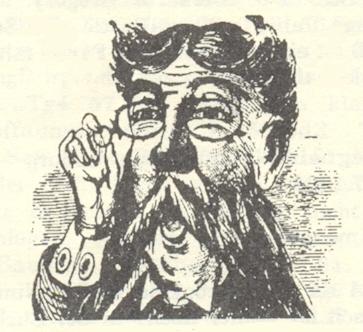
Improbably, this sketch was labelled ‘Dr Siegbert Tarrasch’ on page 8 of Aaron Nimzowitsch 1886-1935 Ein Leben für das Schach by Gero H. Marten (Hamburg, 1995).
(4695)
Joost van Winsen (Silvolde, the Netherlands) submits the following game, which was annotated by Mason on pages 433-434 of the October 1890 BCM:
Siegbert Tarrasch – James Mason
Manchester, 1890
Petroff Defence
1 e4 e5 2 Nf3 Nf6 3 Nxe5 d6 4 Nf3 Nxe4 5 d4 d5 6 Bd3 Be7 7 O-O O-O 8 Re1 Nf6 9 Bf4 Bg4 10 Nbd2 Nh5 11 Be3 Nc6 12 h3 Bxf3 13 Qxf3 g6 14 c3 Qd7 15 Nf1 Nd8 16 Bh6 Ng7 17 Ne3 c6 18 Ng4 Nde6 19 Re2 Qd8 20 Rae1 Bg5 21 Bxg5 Nxg5 22 Qf6 Qxf6 23 Nxf6+ Kh8 24 Re7 N5e6 25 Rxb7 Rab8 26 Rxa7 Rxb2 27 Nd7 Rc8 28 Ne5 Rbb8 29 Nxf7+ Kg8 30 Nh6+ Kh8
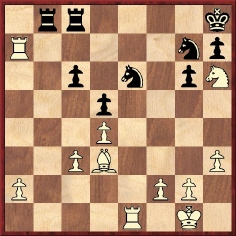
31 Nf7+ Kg8 32 Nh6+ Kh8 33 Nf7+ Kg8 34 Ne5 Ra8 35 Rxa8 Rxa8 36 Nxc6 Rxa2 37 Ne7+ Kf8 38 Nxd5 Ra3 39 Bc4 h6 40 Nb6 Resigns. Mason: ‘The game was adjourned at this point, pro forma; but Black resigned without resuming, as his position was manifestly hopeless.’
Our correspondent comments:
‘When published in the International Chess Magazine (October 1890, pages 309-310) this game was stated to have lasted 37 moves, whereas its length was 38 moves in Tarrasch’s Dreihundert Schachpartien (Gouda, 1925), pages 284-288, and 39 moves in the Deutsche Schachzeitung, November 1890, pages 338-341. These last two publications had notes by Tarrasch.
The International Chess Magazine gave the following conclusion: 31 Nf7+ Kg8 32 Ne5 Ra8 33 Rxa8 Rxa8 34 Nxc6 Rxa2 35 Ne7+ Kf8 36 Nxd5 Ra3 37 Bc4 Resigns. Tarrasch’s book had 31 Nf7+ Kg8 32 Ne5 Ra8 33 Rxa8 Rxa8 34 Nxc6 Rxa2 35 Ne7+ Kf8 36 Nxd5 Ra3 37 Bc4 h6 38 Nb6 Resigns, whereas the Deutsche Schachzeitung put 31 Nf7+ Kg8 32 Ne5 Ra8 33 Rxa8 Rxa8 34 Nxc6 Rxa2 35 Ne7+ Kf8 36 Nxd5 Ra3 37 Bc4 h6 38 Nb6 Kf7 39 d5 Resigns.
The game, however, was adjourned (jokingly by Mason, according to page 271 of Tarrasch’s book). The time-limit in the Manchester tournament was 20 moves per hour.
To complicate matters further, however, the BCM stated that the game was “a friendly contest, played 28 August, at Manchester”. It should be noted that Tarrasch and Mason met in the tournament on 29 August.’
(4740)
Javier Asturiano Molina (Murcia, Spain) asks about the correct game-score of S. Tarrasch v J. Berger, Breslau, 1889, there being two versions in the databases. The deviation occurs at move 48:
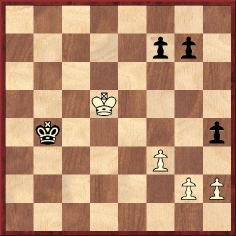
Version A appears in the Breslau, 1889 tournament book, pages 90-92, and in Dreihundert Schachpartien by S. Tarrasch (Gouda, 1925), pages 214-218, but we have yet to find a respectable source for Version B.
The game was given by Nimzowitsch in My System but (coincidentally?) only as far as move 47.
(4752)
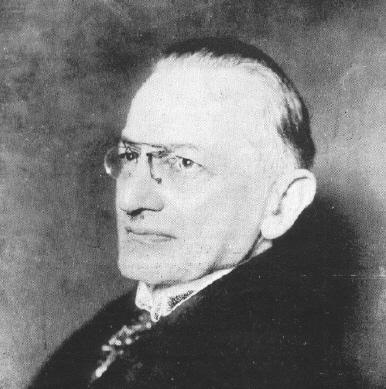
Siegbert Tarrasch
It is de rigueur for the subject of a spoof to profess himself ‘vastly amused by it’ and to appear, at least, a good sport who will take it all in good part. Steinitz, though, took public offence when parodied by Tarrasch, and the consequences were unexpected.
On pages 276-278 of the September 1890 International Chess Magazine he wrote at length about Tarrasch and followed up with some notably critical remarks about him on page 308 of the October 1890 issue. Subsequently, on pages 60-63 of the February 1891 Deutsche Schachzeitung, ‘Dr T.’ annotated a game Vier – v. Dreizehn, Magdeburg, 20 July 1920, which went 1 Nf3 Nf6 2 Nc3 Nc6 3 Ng1 Ng8 4 Nb1 Nb8 5 Nh3 Na6 6 Na3 Nh6 7 Ng1 Ng8 8 Nb1 Drawn. Steinitz reacted as follows on page 45 of the February 1891 issue of the International Chess Magazine:
‘A certain Dr ---sch was some time ago mildly taken to task in this column, page 308, October 1890, International Chess Magazine, for what would have deserved to be called an exhibition of ill-breeding. In the last number of the Deutsche Schachzeitung somebody, disguised under the predicate and initial of Dr T., takes a terrible literary revenge on page 307 of this magazine for the sin committed on page 308. The targets for the chess critical retribution are my remarks on my 13th move in the Two Knights’ Defence, Kt-Kt sq, and especially my comments on the circumstance that six of the pawns on my side were unmoved. On this theme Dr T. constructs a game which it is supposed will be played in 1920 at some chess congress in Germany, and in which both parties move their knights backwards and forwards to B3, Kt sq, and R3, etc. Before framing the notes to this “game of the future”, the wonderdoctor of Nuremberg has probably performed a surgical operation on his own cranium during the leisure hours which his “ärtzliche Praxis” allows him, in order that he might be able to see the joke or wit of his remarks. On my mind it leaves no other impression than that a man who, instead of turning over a new leaf, say to page 308, and making some kind of apology for his ill-mannered behaviour, aggravates his first offence by such a performance of a “dummer Junge” in his “Flegeljahre”, cannot be a genius like Morphy or Anderssen, who, like all true men of supreme eminence, always behaved like gentlemen.’
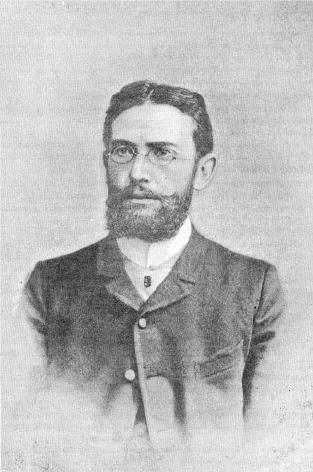
Siegbert Tarrasch
But then came a memorable article by Tarrasch entitled ‘Bemerkungen zu dem Wettkampf Gunsberg-Steinitz’ on pages 88-91 of the March 1891 Deutsche Schachzeitung which eulogized Steinitz as a genius. Below is part of Steinitz’s response, from pages 80-82 of the March 1891 International Chess Magazine:
‘To return to Dr Tarrasch, his answer to the mild rebuke which I administered more to his “Post Official” president than to himself came in the shape of the grossest satire that has ever been written on my theories and my practical play. It turns out to be a mere joke, not a good one – I must say nor in good season. The target for his caustic missiles was apparently my play in the cable match, and considering the responsibility which rested on my shoulders and that I had staked on that contest at least a great part of my reputation in the eyes of the general public, I could hardly be expected to take in very good part such an interference from one who had already seriously trodden on my toes. So much as an explanation of my own action in the quarrel, which was not of a very serious character, though it seemed to degenerate into one of those sanguine literary warfares which have caused me much unhappiness in the course of my life. As usual, however, I was not the aggressor, and the matter was not a mere personal squabble, but was one which in the exercise of my editorial duty could be fairly criticized before the public.
Dr Tarrasch has now made more than honorable amends for his “Zukunftsschach”, or chess of the future, with a research into chess of the past which for boldness of thought and expression, inspired by thorough honesty and magnanimous feeling, has not had its equal in chess criticism of first-class experts within my recollection. It is the handsomest recognition that has ever been accorded to my work and aims as a player and analyst, and its promulgation by a master of a new generation at a time when probably, and to all appearance, my old powers are on the wane, leads me to hope that at least the flagrant injustice to which I have been constantly subjected during the greater part of my career may go out of fashion during my lifetime. Dr Tarrasch’s remarks are really too flattering to me to be quoted in this journal, and I shall only cite one item which has never been mentioned in public. Speaking of myself he says: “He has learned of the game only as much as a second-class player – the rest he has done from his own means. The whole of the modern conduct of the game, or at least by far the greatest part of it, is his work.” The first sentence of the above, which can be easily verified from my games, shows at any rate that Dr Tarrasch has made himself well acquainted with the progress of my play. Unlike some shallow critics who have given me credit for book knowledge or practically credited others with my own new ideas, the Doctor lays most stress on the originality of my play, and I may only take this opportunity to affirm that only just now, while writing my own book, I am going through the openings systematically for the first time in my life. But when Dr Tarrasch denies the genius of Morphy on the ground that the great master did not create anything new in the opening or in the general conduct of the game I must, in common justice, strongly express my dissent from such a conclusion. In my opinion any player of first rank must possess a certain amount of genius at least, including that of some originality, for no learning will be sufficient for mastering the complications of the middle-game. Any extraordinary performance, whether it be the result of the excess of one excellent quality or a rare combination of fine qualities, may be taken as an absolute sign of genius, and in the case of Morphy his youth cannot be ignored in estimating his standard of eminence.’
These substantial texts by Tarrasch and Steinitz about the latter’s place in chess history have received insufficient attention, whereas the eight-move-game parody is well known. Among the places it has appeared in English are pages 121-123 of the March 1891 BCM, pages 151-152 of Checkmate, April 1903 and pages 154-156 of The Treasury of Chess Lore by Fred Reinfeld (New York, 1951).
Finally, the note at Black’s seventh move takes us back to C.N. 2323 (see page 344 of A Chess Omnibus), which discussed the phrase ‘the father of modern chess’. Those words appeared, with reference to Steinitz, in the BCM version of the parody, which was credited to the New York Herald. However, the relevant phrase in the Deutsche Schachzeitung original was ‘der Vorläufer unserer modernen Schachstrategie’.
(4773)
Steve Wrinn (Homer, NY, USA) points out that the following appeared on page 206 of Tarrasch’s Dreihundert Schachpartien (Leipzig, 1895), regarding his poor performance at the Leipzig, 1888 tournament:
‘Ich glaubte, es genüge vollkommen, mich ans Brett zu setzen und Züge zu machen, um zu gewinnen ...
... Ich sah ein, daß es nicht genügt, ein guter Spieler zu sein, sondern daß man gut spielen muß.’
Our translation:
‘I believed that to win it was quite sufficient for me to sit down at the board and make moves ...
... I recognized that it is not enough to be a good player, but that one must play well.’
In the 1909 and 1925 editions of Dreihundert Schachpartien the passage is on pages 189 and 190 respectively.
(4877)
C.N. 4868 quoted from page 63 of the August 1898 American Chess Magazine regarding Tarrasch:
‘“It is not sufficient to be a good chessplayer, one must play good chess”, is one of his favorite sayings.’
The reporter was Armin Friedmann in Pester Lloyd, 20 or 21 June 1898. The original German version was given on page 346 of the Vienna, 1898 tournament book:
‘“Es ist nicht genug, dass man ein guter Spieler ist, man muss auch gut spielen”, lautet einer seiner Aussprüche.’
In C.N. 4877 a correspondent referred us to the following on page 206 of Tarrasch’s Dreihundert Schachpartien (Leipzig, 1895), regarding his poor performance at the Leipzig, 1888 tournament:
‘Ich glaubte, es genüge vollkommen, mich ans Brett zu setzen und Züge zu machen, um zu gewinnen ...
... Ich sah ein, daß es nicht genügt, ein guter Spieler zu sein, sondern daß man gut spielen muß.’
Our translation:
‘I believed that to win it was quite sufficient for me to sit down at the board and make moves ...
... I recognized that it is not enough to be a good player, but that one must play well.’
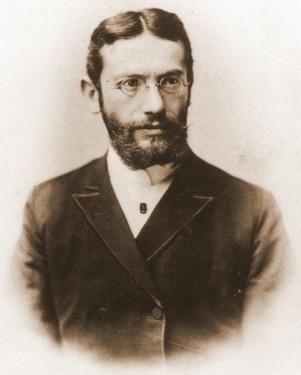
Siegbert Tarrasch
Now we note the following in an ‘Interview with Dr Tarrasch’ on pages 196-198 of the Chess Player’s Chronicle, 20 September 1890 (an article originally published in the Birmingham Daily Gazette):
‘In 1888 he won first prize in the German Masters Tourney at Nuremburg, but failed to obtain a place in the Leipsic Congress. He says, “I found myself underrating my opponents and underplaying myself. It is not enough to be strong; you must put your strength into your play”.’
The interview closed with another notable remark from Tarrasch:
‘I get no first-class play in Nuremburg, and the less I practice the better I play.’
(5121)
The conclusion of Fischer v Geller, Skopje, 1967 on page 365 of Fischer’s My 60 Memorable Games (New York, 1969):
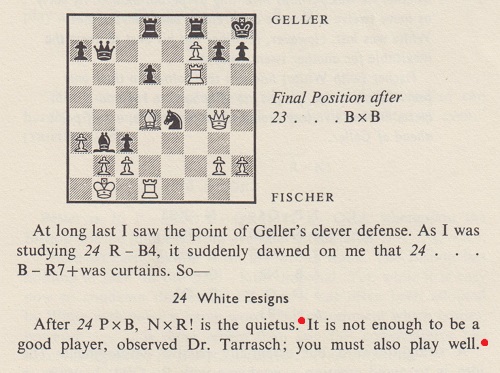
The observation by Tarrasch, discussed in C.N.s 4868, 4877 and 5121, was given too in The Chess Wit and Wisdom of W.E. Napier:
‘I knew Dr Tarrasch pleasantly at Monte Carlo, 1902. One day the fates had gone against me, malevolently, I felt, in a game against a man I had counted on beating. I got, by way of spur, this vitamin from the Doctor: “In these tournaments it is never enough to be a connoisseur of chess; one must also play well.”’
Source: the introduction to item 72 of unit one of Napier’s Amenities and Background of Chess-Play (New York, 1934), the inside front cover of the September 1956 Chess Review and page 143 of Paul Morphy and The Golden Age of Chess (New York, 1957 and 1971).
Regarding Tarrasch’s text in Dreihundert Schachpartien (discussed in the earlier C.N. items), a book review on page 51 of the February 1910 BCM gave this translation:
‘I perceived that it did not suffice to be a good player if one did not play well.’
The earliest occurrence of the remark that we can now cite is in L. Hoffer’s biographical article on Tarrasch on pages 354-355 of the Chess Monthly, August 1889:
‘He was, however, unsuccessful in a small tournament at Leipzig in December last, von Bardeleben and Riemann dividing first and second. As Dr Tarrasch told us at Breslau, this contretemps had a salutary effect; and he found “that it is not enough to be a good player, but that one must also play well”.’
(10771)
This position gave rise to a famous move by White:
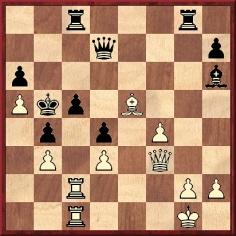
After 31 Bc7 Black resigned.
It is strange how often, nowadays, this game is merely labelled ‘Tarrasch v the Allies’, as if the identity of the losers were unknown. They were D. Marotti, E. Napoli, de Simone and del Giudice, as is shown by such sources as pages 120-121 of Deutsches Wochenschach, 5 April 1914 and pages 180-182 of Schachjahrbuch für 1914 II. Teil by L. Bachmann (Ansbach, 1914).
The four names were also given by Tarrasch when he annotated the game (played at the Circolo Artistico in Naples on 9 March 1914) in the Berliner Lokal Anzeiger; those annotations were reproduced on pages 162-163 of La Stratégie, April 1914. The names also appeared when the game was presented on pages 398-399 of Tarrasch’s book Die moderne Schachpartie (Leipzig, 1924) and on pages 168-170 of Tarrasch’s Schachzeitung, March 1934 (published after his death). In these last two sources ‘Gindice’ was given instead of Giudice. The strongest of the allies was Davide Marotti (1881-1940), who became Italian champion in 1921.
(5161)
C.N. 5161 named the four Italian players against whom Tarrasch won a game in Naples in 1914 which featured the spectacular move 31 Bc7.
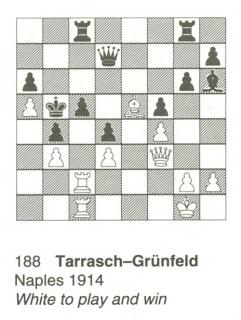
As shown above, on page 117 of the Chess Traveller’s Quiz Book (London, 1993) Julian Hodgson inexplicably identified Black as Grünfeld, also adding black pawns on f5 and g6.
(6279)

White played 31 Bc7
Richard Forster points out that the game was given with Tarrasch’s notes on page 4 of the second part of the Züricher Post, 22 March 1914:
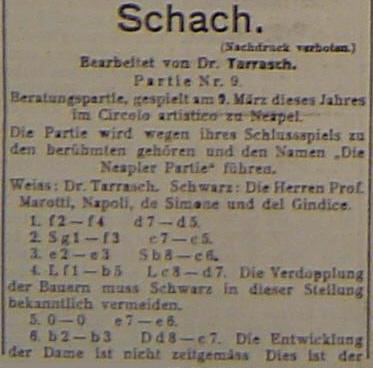
(7050)
See too C.N. 7730.
Jan Kalendovský (Brno, Czech Republic) submits a caricature of Tarrasch [and one of Tartakower], from Schach Karikaturen aus der internationalen Schachwelt by E. Gőndőr (Vienna, 1922):
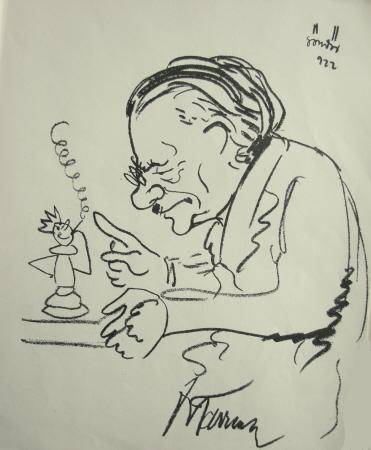
(5247)
Charles Sullivan (Davis, CA, USA) refers to Tarrasch v Alekhine, Hastings, 18 September 1922. Alekhine annotated the game on pages 45-47 of his tournament book (published in London in 1924); in the Dover reprint (New York, 1968) the page numbers are 41-43. See also pages 172-173 of the Skinner/Verhoeven volume on Alekhine.
Our correspondent asks whether the game-score in these sources is faulty, given that Alekhine would have been unlikely to miss the opportunity in the position below (after 34 Bxh1) to win the white bishop with 34...d4.
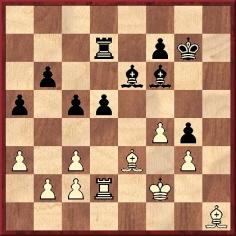
We suspect (but cannot prove) that there is indeed an error in the game-score. When moves 1-37 were published on pages 36-37 of the November 1922 Chess Amateur Black’s 32nd move was given as ...Re8 and not ...Rd7. In that case, the position after 33 Rh1 Rxh1 34 Bxh1 would not give the possibility of winning the bishop. An alternative explanation is that at move 32 Alekhine played ...Rd6. That is the move given on page 378 of Alexander Alekhine I Games 1902-1922 (Sofia, 2002).
(5495)
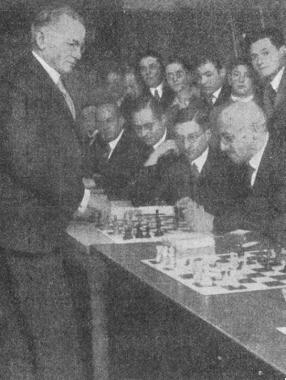
Siegbert Tarrasch
‘Up to this point White has been following well-known analysis but now he makes a fatal error – he begins to use his own head.’
This remark was merely labelled as ‘Tarrasch, on a game in a world championship match’ when given on page 52 of The Chess Scene by David Levy and Stewart Reuben (London, 1974). Is any further information available?
(5499)
An excerpt from page 52 of The Chess Scene:
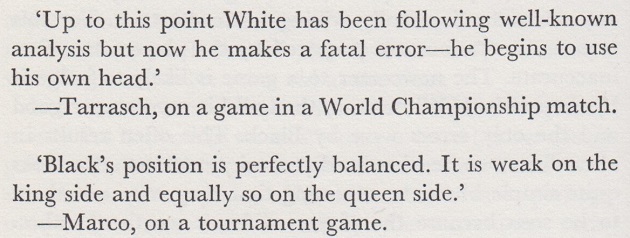
Information about those sourceless quotes was requested in C.N.s 5499 and 5248 respectively, and Michael Lorenz (Vienna) now points out that the latter observation is not by Marco but by Tarrasch:
‘Schwarz hat eine sehr symmetrische Stellung aufgebaut: er steht auf dem Damenflügel gerade so schlecht wie auf dem Königsflügel.’
Tarrasch made the remark after Black’s ninth move in Janowsky v Delmar, Cambridge Springs, 1904. His annotations from the Berliner Lokalanzeiger were reproduced on pages 316-317 of the October-November 1904 Wiener Schachzeitung (edited by Marco).
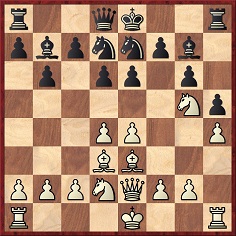
Position after 9...Nd7
(11380)
Regarding pages 111-112 of Tarrasch’s book on his 1908 world championship match, Der Schachwettkampf Lasker-Tarrasch (Leipzig, 1908), Scott Thomson (New York) writes:
‘Tarrasch states that he planned to play a training match with a chess master, but that at the last moment the master failed to show up, thus depriving Tarrasch of needed practice and contributing to his very poor start to the match. Tarrasch is quite bitter about what he sees as a betrayal. Do you know the identity of this master?’
This matter was touched on by Emanuel Lasker in the New York Evening Post of 24 October 1908:
‘First, Tarrasch wrote that Düsseldorf has an ocean climate, that the sea winds upset him; then, that at the commencement of the match, he had not had his full force, because both Schlechter and Rubinstein failed, as they had promised, to practise with him; then, that I was lucky.’
See C.N. 1688 (on pages 188-189 of Chess Explorations), as well as page 325 of Siegbert Tarrasch Leben und Werk by Wolfgang Kamm (Unterhaching, 2004).
The photograph below is the frontispiece to The Championship Match: Lasker v Tarrasch by L. Hoffer (London, 1908):
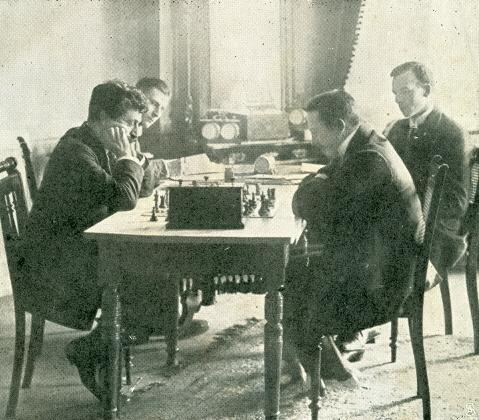
Emanuel Lasker and Siegbert Tarrasch
(5517)
From an interview with Helmut Pfleger on page 98 of the 5/2008 New in Chess:
‘What is the best chess truth you ever heard?
What Siegbert Tarrasch said to Emanuel Lasker before their world championship match in Düsseldorf 1908: “For you, Dr Lasker, I have only three words: ‘Schach und Matt!’” Then he lost horribly, excusing himself partly because of the sea climate there.’
How far back can the ‘Schach und Matt’ story be traced? It appeared on page 118 of Emanuel Lasker Biographie eines Schachweltmeisters by J. Hannak (Berlin-Frohnau, 1952):
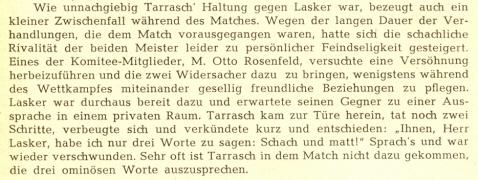
Below is the English version, from page 130 of Hannak’s Emanuel Lasker The Life of a Chess Master (London, 1959):
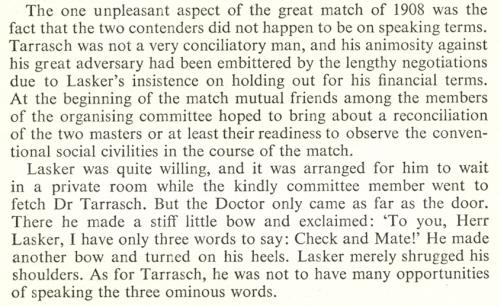
The ‘sea air’ matter was discussed on pages 188-189 of Chess Explorations and in C.N. 5517. We wonder whether Tarrasch gave any further explanation or apology for his claim to have been affected by the sea air in Düsseldorf, which is roughly 180 kilometres from the coast.
Below is a report on page 289 of the September 1908 Deutsche Schachzeitung.
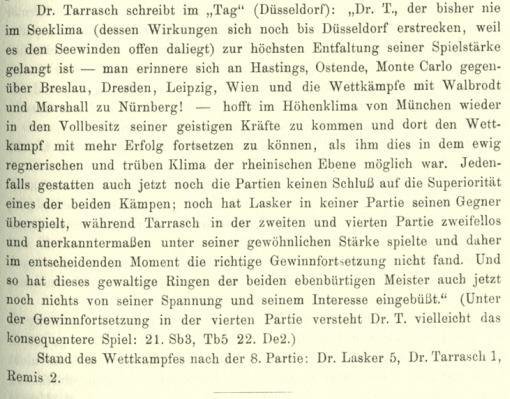
(5707)
Further to the Tarrasch-Lasker story, we note the following variation on a theme: a passage by Saint-Amant in the course of his bitter public dispute with Staunton. It comes from page 40 of Le Palamède, January 1845:
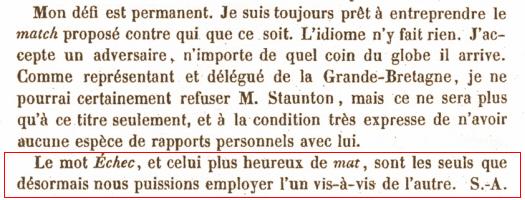
(5719)
Tony French (Worthing, England) quotes from page 10 of Why You Lose at Chess by Fred Reinfeld (London, 1957):
‘The immortal Tarrasch glibly explained that his disappointing play at the Hastings Tournament in 1895 was caused by the sea air.’
In C.N. 1688 (see page 189 of Chess Explorations) we wrote, after mentioning the ‘sea air’ claim regarding Düsseldorf:
‘Tarrasch was doubtless on terra that was more firma when he “complained of lassitude from the effects of the sea air at Hastings in 1895” (American Chess Bulletin, July 1905, page 250).’
The following page of the Bulletin had a sketch of Tarrasch by Julius Hess from the New Yorker Staats Zeitung, the context being the Ostend, 1905 tournament:
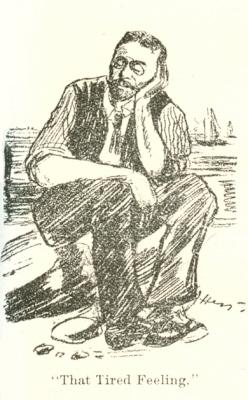
(5724)
From page 79 of How to Play Chess Like a Champion by Fred Reinfeld (New York, 1956):
‘Tarrasch was certainly one of the great masters of all time. His brilliant period extended from 1889 to 1907. Order and method were his gods. When everything went right, he was unbeatable. But he ruled out the personal factors in chess, and that was his undoing. In defeat poor Tarrasch had the longest list of the most curious alibis ever seen in the chess world. In fact, some people rudely suggested that his alibis were more ingenious than his chess.’
Easy to write, harder to substantiate.
(9369)
‘The immortal Tarrasch glibly explained that his disappointing play at the Hastings Tournament in 1895 was caused by the sea air.’
In C.N. 5724 a correspondent quoted that remark from page 10 of Why You Lose at Chess by Fred Reinfeld (New York, 1956 and London, 1957). Below is the full section (on pages 10-11), which includes ‘one of the most fantastic stories in the history of tournament play’:
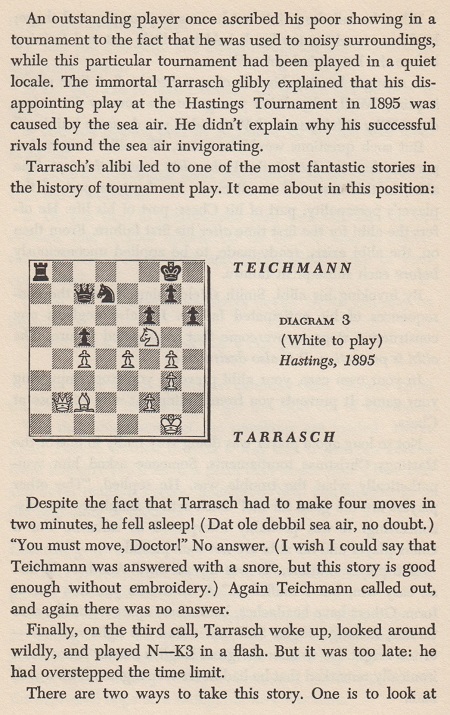
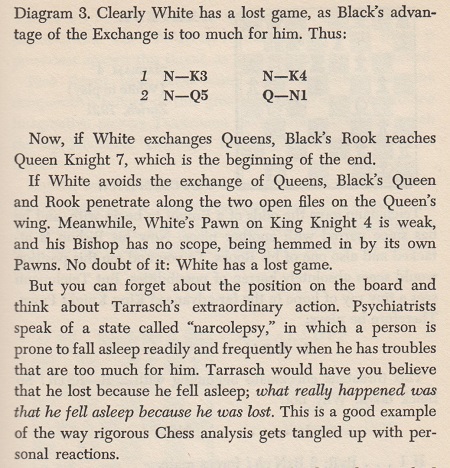
We note the following on pages 182-183 of Das internationale Schachturnier zu Hastings im August-September 1895 by E. Schallopp (Leipzig, 1896), at the end of the Tarrasch v Teichmann game:
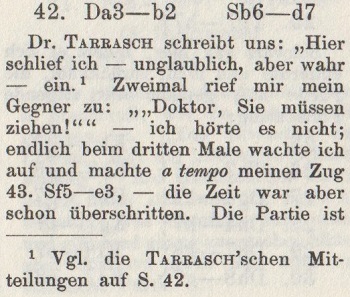

Tarrasch’s remarks on page 42, as referred to in the footnote:
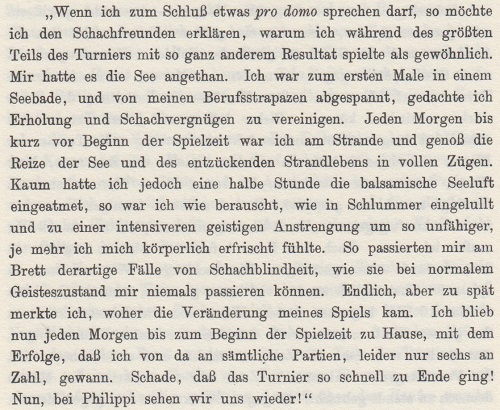
(10017)
On the Tarrasch controversy over the climate in Düsseldorf, an addition from pages 302-303 of the Wiener Schachzeitung, September-October 1908:

This has been extracted from an interview with Tarrasch by Hans Taub originally printed in the Münchener Neueste Nachrichten, 23 September 1908.
(10095)
Following on from our feature article Adams v Torre – A Sham?, João Pedro S. Mendonça Correia (Lisbon) refers to another position leading to the back-rank theme. It comes from a game played in the first half of the 1880s in which Siegbert Tarrasch was White against Bernhard Richter:
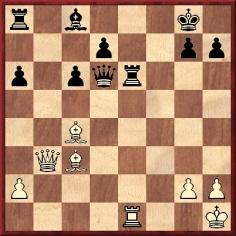
After 1...Kh8 (given a question mark by Tarrasch) White won with 2 Bxe6 dxe6 3 Rd1 Qc7
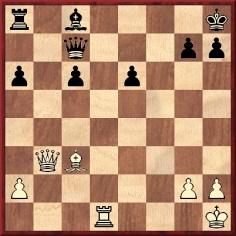
4 Ba5 Qxa5 5 Qb4 Resigns.
Source: Dreihundert Schachpartien by S. Tarrasch (Leipzig, 1909), page 43. See also page 37 of the English edition Three Hundred Chess Games (Park Hill, 1999). The position appeared too on pages 262-263 of Tarrasch’s book Das Schachspiel (Berlin, 1931) and pages 186-187 of The Game of Chess (London, 1935).
(5817)
As mentioned in The Most Famous Chess Quotations, Tarrasch’s observation ‘Chess, like love, like music, has the power to make men happy’ appeared on page xi of The Game of Chess.
Owners of the 1994 algebraic edition of Tarrasch’s book, edited by Lou Hays and David Sewell, are invited to look for the passage.
(5823)
Siegbert Tarrasch’s famous quote about chess, love and music (C.N. 5823) has overshadowed other remarks also on page xi of The Game of Chess (London, 1935):
‘... practice makes the master. Any moderately talented player, he need not be exceptionally gifted, can become a master. But really, there is no need for that. The right standpoint is to play for pleasure – and do not think that pleasure is proportional to skill. The greatest bunglers are constantly deriving the greatest pleasure from chess – they go into ecstasies of delight when their knight forks a king and queen.’
The original text by Tarrasch, on page 4 of Das Schachspiel (Berlin, 1931):
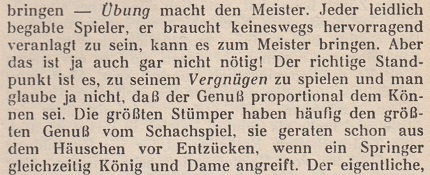
(9319)
An entry in The Most Famous Chess Quotations:
Siegbert Tarrasch (1862-1934)
- ‘Das Schach hat wie die Liebe, wie die Musik die Fähigkeit, den Menschen glücklich zu machen.’
Das Schachspiel by S. Tarrasch (Berlin, 1931), page 4.
- ‘Chess, like love, like music, has the power to make men happy.’
The Game of Chess by S. Tarrasch (London, 1935), page xi. Translated by G.E. Smith and T.G. Bone.
As indicated in C.N. 5823, that sentence – and, indeed, Tarrasch’s entire Preface – was omitted from the 1994 algebraic edition of The Game of Chess, edited by Lou Hays and David Sewell. C.N. 7375 gave the French translation, by R. Jouan, of Tarrasch’s celebrated observation, from page 8 of Traité pratique du jeu d’échecs (Paris, 1952): ‘Les échecs, comme l’amour, comme la musique, ont la possibilité de donner du bonheur à l’homme.’
On-line nowadays it is possible to find not only ...
‘Chess, like love, like music, has the power to make men happy’
but also ...
‘Chess, like love, like music, has the power to make people happy.’
We do not know who first amended the Smith/Bone translation, and readers will have their own views on whether the alteration is justified.
An extreme case of a leading master’s prose being altered has been pointed out in Capablanca Book Destroyed. In his 2006 edition of Chess Fundamentals Nick de Firmian’s changes included putting ‘he or she’ where Capablanca had written ‘he’. If, heaven forfend, de Firmian were let loose on Alekhine’s book on Nottingham, 1936, he would come to this note, on page 56 of the original, concerning the third-round game between Alekhine and Tylor:
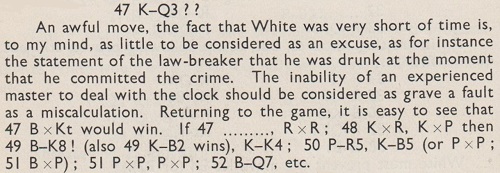
Or, in the ‘style’ imposed by de Firmian:
‘... the statement of the law-breaker that he or she was drunk at the moment that he or she committed the crime.’
(10354)
From page 33 of the November 1905 issue of Lasker’s Chess Magazine (in a signed article by Emanuel Lasker following the Tarrasch v Marshall match):
‘The Doctor [Tarrasch] holds peculiar views on the championship of the world, thinking that the title of champion of the world is an epithet reserved for the best acknowledged player. This a German view, or rather error. To an Englishman or American it needs not to be pointed out that the champion of the world will, generally speaking, be he who is worthiest of the title, inasmuch as a holder not worthy of its possession will soon be replaced by the legitimate claimant, but that for a time the champion may be a second or third best man.
The difference in the German and Anglo-Saxon view leads to results of practical import. A German might claim the title by pointing out his achievements, on the strength of mere argument. An Englishman or American will attempt to prove his right to the title in a battle with the man defending his position.’
(6062)
From Ingo Althöfer (Jena, Germany):
‘Page 302 of volume two of Theorie und Praxis des Schachspiels by Oskar Cordel (published posthumously in Potsdam in 1913) stated that an entire book by Cordel on a “Dreizügegesetz” (“three moves law”) had been in preparation. No such volume was ever published, but is it known whether a manuscript has survived?
On the above-mentioned page Cordel’s law was summarized as stating that in an arbitrary position there is either only one best move (a “forced move”) or there are three moves of approximately equal strength. This law, so Cordel claimed, provides excellent assistance in assessing the correctness of chess variations. Concretely, it had helped him to clarify situations where openings books asserted that investigations were not yet complete, examples being the Evans Gambit and the Giuoco Piano. If there were two continuations of seemingly similar strength, Cordel was convinced that one of the continuations was wrong, or else that there had to exist a third one. He would not stop analysing until the situation had been resolved.
The law was also mentioned by Henk Smout on page 45 of issue 33 of Kaissiber.’
Our correspondent adds that Tarrasch is sometimes attributed the suggestion that in every chess position there is a unique best move, and he wonders a) where Tarrasch stated this in print and b) whether Cordel was inspired by Tarrasch when he formulated his law.
As regards the first question, we are hopeful that readers will be able to help us find citations from Tarrasch’s writings. In the meantime, we quote three paragraphs by Emanuel Lasker on page 126 of the January 1906 issue of Lasker’s Chess Magazine:
‘Dr Tarrasch’s strength or weakness, if one likes – is his pronounced amour propre. Without it he would have been a very mediocre chessplayer; gifted to an abnormal degree, he has become a giant. His amour propre is such that he must excel in something. Chess was, as it were, the easier medium for him to choose, and he is very fond of chess, therefore, but, most particularly of his own chess. He has written two chess books and is writing a third one – all about himself, his victories, his opinions, his life and evolution. He writes very wittily and entertainingly. But his naïve self-adoration often influences his judgment of men and affairs and even chess positions.
There is no game on earth played by anybody but Dr Tarrasch in which he would not point out a mistake or a faster road to victory or improvement of some kind. In his criticisms his personality must be predominant. This is the one great weakness of the doctor’s critical judgment. In his personal life he is, like many Germans of the better classes, always “correct”. To be “correct” signifies, in Germany, the attitude of a man whose conduct, in the judgment of his neighbors, is always proper and befitting his station. In order to be “correct”, one must be guided by the opinion of others; one must be without a moral or ethical code of one’s own, and annex that of one’s surroundings. In dress, in what he says and does in public, Dr Tarrasch is always “correct”.
It is the same in chess. He always tries to find the “correct” move which, if his understanding of it is analyzed, is the move which, in the opinion of the best judges, would satisfy all requirements. As he is very painstaking and earnest in his studies, his strength in chess is exceedingly great. But still one cannot help feeling that it is acquired, not born in him, for he follows the progress of ideas but never leads it.’
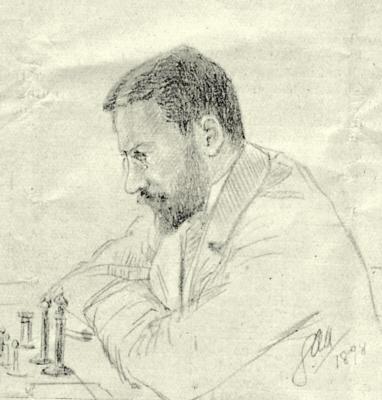
Siegbert Tarrasch
(6066)
João Pedro S. Mendonça Correia quotes from page 217 of The Game of Chess by Siegbert Tarrasch (London, 1935):
‘We must not imagine, however, that we can attack wherever we wish. In chess, to play correctly, we can never do what we wish, we must do only what we are forced to do, what the position demands. Positional play, that is to say, playing according to the position, is the only correct method, and from it combinations result of themselves. We must attack where we are strong and our opponent weak. We should always attempt to occupy the strong points in our own and the weak points in our opponent’s game, at the same time striving to prevent the occupation of such points by our opponent. Each position must be regarded as a problem, where it is a question of finding the correct move, almost always only one, demanded by that position. In a game of chess secondary solutions are almost non-existent, except in the first moves of the opening where there is freedom of choice.’
It is the penultimate sentence which is particularly relevant to our theme. The original text, on page 306 of Das Schachspiel (Berlin, 1931), reads:
‘Jede Stellung muß man als ein Problem betrachten, bei dem es gilt, den richtigen Zug, den die Stellung erfordert und der fast immer ein einziger ist, zu finden.’
Wanted: earlier occurrences of such sentiments in Tarrasch’s writings.
(6082)
From Olimpiu G. Urcan (Singapore) comes this sketch on page 438 of the November [sic – it was mistakenly headed ‘October’] 1905 BCM:
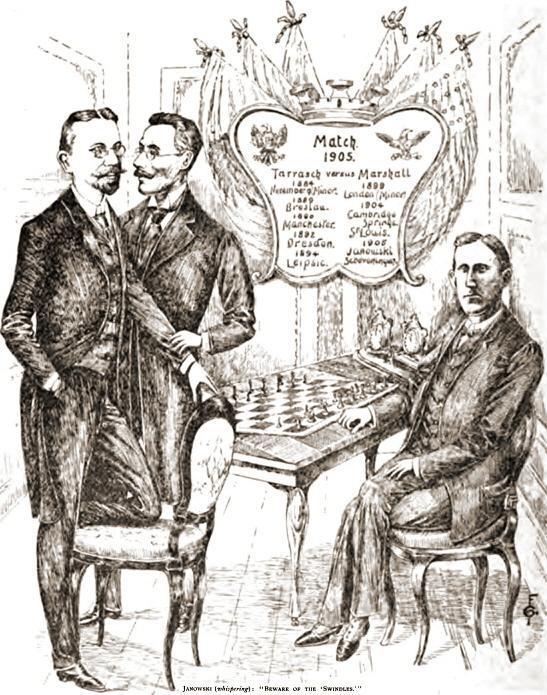
(6149)
A common piece of chess ‘wisdom’ is that good moves are pleasing on the eye, but when was this view first expressed? We note that it appeared on page 445 of Tarrasch’s Das Schachspiel (Berlin, 1931), concerning White’s opening play in Alekhine v Yates, London, 1922:
‘Die wirklich guten Züge sind auch fast immer, ich möchte sagen, ästhetisch schön.’
The English edition (page 359 of The Game of Chess) stated:
‘Really good moves are almost always, I might say, aesthetically pleasing.’
(6344)
C.N.s 1720 and 1779 (see page 200 of Chess Explorations) discussed this famous game:
Walther von Holzhausen – Siegbert Tarrasch
Simultaneous display, Frankfurt, 7 October 1912
Two Knights’ Defence
1 e4 e5 2 Nf3 Nc6 3 Bc4 Nf6 4 d4 exd4 5 O-O d6 6 Nxd4 Be7 7 Nc3 O-O 8 h3 Re8 9 Re1 Nd7
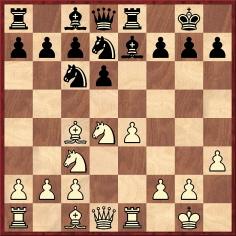
10 Bxf7+ Kxf7 11 Ne6 Nde5 12 Qh5+ Kg8 13 Nxd8 Rxd8 14 Nd5 Resigns.
It is often claimed that, from the diagram, play went 10 Bxf7+ Kxf7 11 Ne6 Kxe6 12 Qd5+ Kf6 13 Qf5 mate, but all the contemporary sources that we have consulted have Black resigning at move 14. In C.N. 1779, for instance, page 367 of Deutsches Wochenschach, 13 October 1912 was mentioned by a correspondent, and below we reproduce the relevant part of page 345 of the November 1912 Deutsche Schachzeitung:
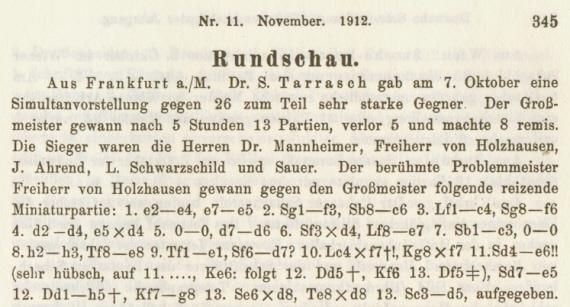
Many books have gone awry. Page 42 of Le guide des échecs by N. Giffard and A. Biénabe (Paris, 1993) gave the 13 Qf5 mate version and stated that the game was played in Hamburg in 1910. No corrections have been made in the new edition (Paris, 2009). Page 62 of Chess Tactics by P. Littlewood (Ramsbury, 1984) transferred the game to Berlin (with the correct date, 1912) and said that Tarrasch resigned after 10 Bxf7+. The text was left uncorrected when a new edition was published by Batsford in 2004. Page 181 of Combination in Chess by G. Négyesy and J. Hegyi (Budapest, 1965) gave the conclusion as 11 Ne6 Resigns, adding: ‘What is more, a few years before, the same combination occurred in a game played in the Soviet Union [sic].’ The identical text appeared in the revised edition (Budapest, 1970).
How far back the various errors can be traced is difficult to say, but we note that pages 108-109 of Tartakower’s Bréviaire des échecs (Paris, 1934) had the 13 Qf5 mate version (with Hamburg as the venue and 1910 as the date).
(6382)
Noting that Tarrasch is sometimes attributed the suggestion that in every chess position there is a unique best move, Ingo Althöfer (Jena, Germany) asked in C.N. 6066 where Tarrasch made such a statement in print.
He now points out the following:
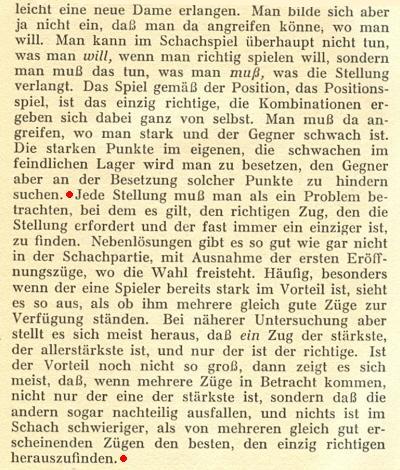
Das Schachspiel by S. Tarrasch (Berlin, 1931), page 306
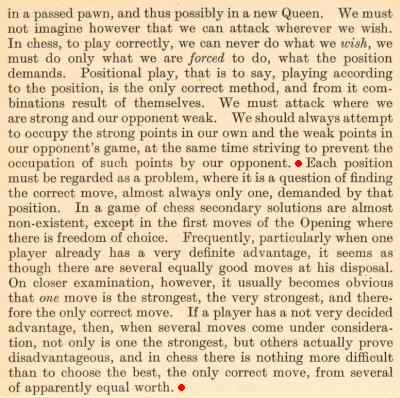
The Game of Chess by S. Tarrasch (London, 1935), page 217.
(7067)
On the subject of Fischer’s My 60 Memorable Games, in a note at move 12 in Game 2 Tarrasch was quoted: ‘Before the endgame the gods have placed the middle game.’ It is indeed one of the German master’s best-known phrases, and we note in his writings two occurrences of the original German (‘Aber vor das Endspiel haben die Götter das Mittelspiel gesetzt’):
1) Note to 30 Qxa7 in Wolf v Tarrasch, Monte Carlo, 1903, in the Berliner Lokalanzeiger, reproduced on pages 111-112 of the April-May 1903 Wiener Schachzeitung;
2) Note to 12...Bf6 in Maróczy v Tarrasch, Ostend, 1905 in the Berliner Lokalanzeiger, reproduced on pages 275-276 of the September-October 1905 Wiener Schachzeitung.
Both games were included in Tarrasch’s book Die moderne Schachpartie (various editions), and the ‘gods’ remark thus appears twice. Below are the passages on pages 96 and 356 of the fourth edition (Leipzig, 1924):
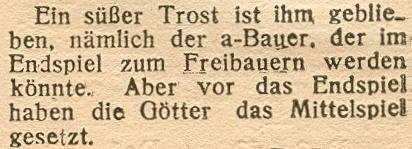

(6218)
‘Tarrasch once observed that if one piece stands badly, all the pieces stand badly.’
Source: Planning by Neil McDonald (London, 1995), page 19.
As in the case of the ‘Tarrasch and the gods’ quote (C.N. 6218), more than one source can be provided for such a remark:
Those wordings (with ‘often’ and ‘usually’) are not as categorical as the McDonald version, but there may well be further occurrences of a similar observation elsewhere in Tarrasch’s writings.
(6284)
Maurice Carter (Fairborn, OH, USA) sends us from his collection a postcard written by Tarrasch on 18 December 1923 to Axel Lindström, regarding the imminent publication of the fourth edition of Die moderne Schachpartie (Leipzig, 1924), which Tarrasch dedicated to him:
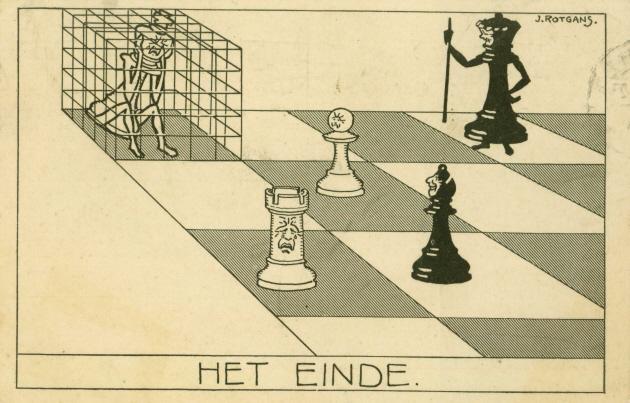
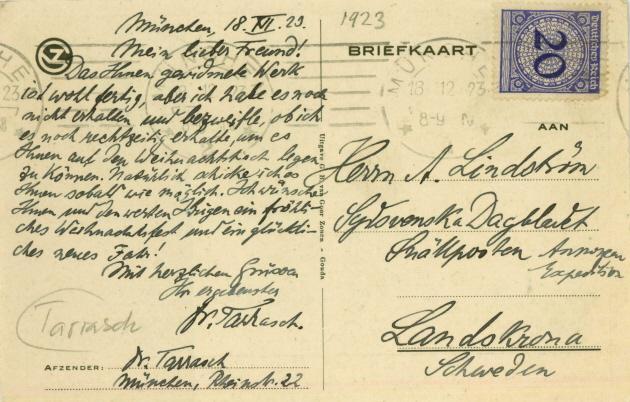
Mr Carter mentions that a small reproduction of the card appeared, together with a transcription, on page 675 of Siegbert Tarrasch Leben und Werk by Wolfgang Kamm (Unterhaching, 2004). He wonders whether it was Tarrasch’s personal postcard and whether other masters have had their own distinctive stationery.
The dedication in Tarrasch’s book:
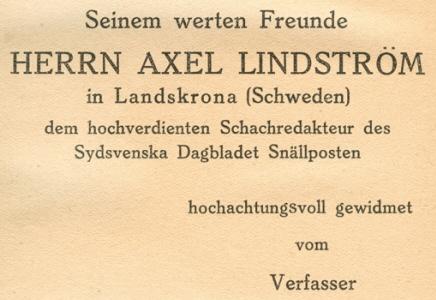
(6759)
From page 165 of the July 1935 Chess Review:
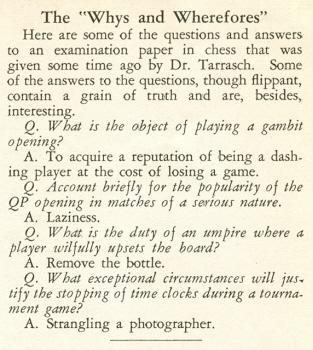
These responses by Tarrasch to an ‘examination paper’ are well known, having been reproduced by Fred Reinfeld on pages 291-292 of The Treasury of Chess Lore (New York, 1951) and on page 283 of The Joys of Chess (New York, 1961).
Where, though, did the item first appear?
(7047)
Javier Asturiano Molina enquires whether the game-score of Englisch v Tarrasch, Frankfurt am Main, 1887 has been lost.
We have never seen the game. Played on the morning of 22 July, it is absent from the tournament book.
(7123)
Bradley J. Willis (Edmonton, Canada) is interested in translations of Tarrasch’s books. Can readers assist us in building up a comprehensive list?
(7359)
The list below is confined to volumes in our collection.
Tarrasch’s Das Schachspiel (Berlin, 1931) was translated into English by G.E. Smith and T.G. Bone as The Game of Chess (Chatto and Windus, London, 1935 and David McKay Company, Philadelphia, 1935). It was reprinted by David McKay Company, Inc., New York in 1976 and by Dover Publications, Inc., New York in 1987. An algebraic edition edited by Lou Hays and David Sewell was brought out by Hays Publishing, Dallas in 1994.
A French edition of Das Schachspiel, translated by René Jouan, was published by Payot, Paris in 1952 under the title Traité pratique du jeu d’échecs. The company has reprinted it many times.
Dreihundert Schachpartien, of which Tarrasch produced a number of editions, was the subject of an English translation, Three Hundred Chess Games, in two volumes published in 1959 and 1961. The translators were Robin Ault and John Kirwan for volume one (which included games 1-119) and Robin Ault for volume two. (Preparation of this item has revealed that our collection lacks volume two, and we shall be glad to hear from any reader with a copy for sale.) Another English translation of the book, also entitled Three Hundred Chess Games, was by Sol Schwarz, brought out by Hays Publishing, Park Hill in 1999. A Russian translation by V.I. Murakhveri, 300 shakhmatnykh partii, came from Fizkultura i sport, Moscow in 1988. In 2007 Caissa Italia editore, Rome published an Italian translation, 300 partite di scacchi, by Alex Tonus.
Die moderne Schachpartie, of which several editions appeared, has been translated into Russian by V.I. Murakhveri, in two volumes, under the title Uchebnik shakhmatnoi strategii (AST, Moscow, 2001).
Das internationale Schachturnier des Schachclubs Nürnberg im Juli-August 1896 by Tarrasch and C. Schröder (Leipzig, 1897) was translated into English by John C. Owen as Nuremberg 1896 International Chess Tournament (Caissa Editions, Yorklyn, 1999).
Tarrasch’s Das Grossmeisterturnier zu St. Petersburg im Jahre 1914 (Nuremberg, 1914) was translated into Swedish by Eric Uhlin as Stormästarturneringen i S:t Petersburg 1914 (Tidskrift för Schacks Förlag, Örebro, 1955). In 1993 Caissa Editions, Yorklyn published St Petersburg 1914 International Chess Tournament, translated by Robert Maxham.
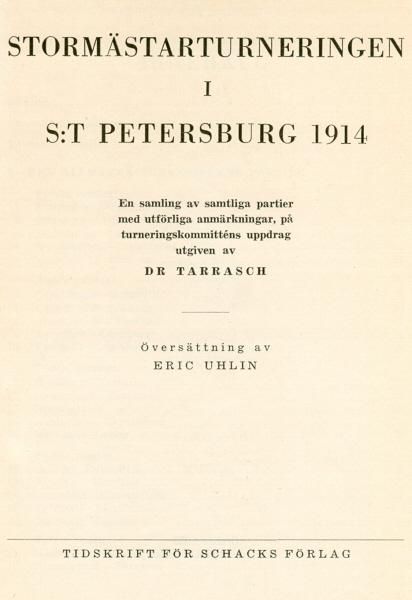
We are grateful to Tony Peterson (Southend-on-Sea, England) and Robert Sherwood (E. Dummerston, VT, USA), who have written to us on this topic.
From pages 7-8 of Traité pratique du jeu d’échecs:
‘Le plus grand charme du jeu vient de ce qu’il est une réalisation intellectuelle et les réalisations intellectuelles sont parmi les plus grandes jouissances de l’existence, si même elles ne sont pas les plus grandes. Tout le monde ne peut écrire une pièce de théâtre, construire un pont, voire faire un bon mot. Mais, dans le jeu d’échecs tout le monde peut et doit créer intellectuellement et savourer ce plaisir de choix. J’éprouve toujours un peu de pitié pour ceux qui ne savent pas y jouer, comme j’en ai pour ceux qui n’ont jamais connu l’amour. Les échecs, comme l’amour, comme la musique, ont la possibilité de donner du bonheur à l’homme.
C’est le chemin qui conduit à ce bonheur que j’ai voulu enseigner dans ce livre.’
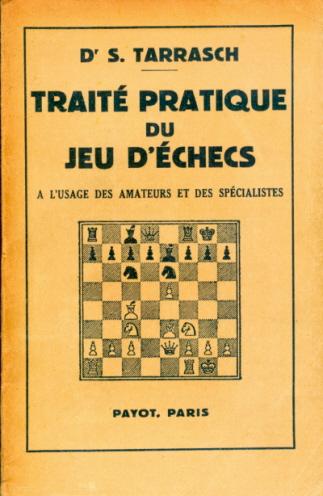
(7475)
Gene Gnandt (Houston, TX, USA) has found an article by Capablanca on page 9 of the Evening Post (New York), 22 July 1916. We have transcribed it below:
‘When I speak of Tarrasch, I feel that I should be very cautious, lest I say something that may offend him. For Tarrasch is one of those who outdo themselves in their efforts to appear scrupulously correct. He is extremely fastidious, sensitive and possessed of a superabundance of pride, which, I should not say, is offensive in his case. When I think of Tarrasch, I see his inevitable boutonnière, his carefully soaped moustache, his immaculate and fashionable clothes. If anything disturbed the orderly appearance of his attire, it was a crime; but if anything caused his moustache to lose its peculiar outlines, it was sacrilege. Tarrasch also believed that he was born to radiate his brilliance especially before the ladies. One day during the San Sebastián tournament a lady was announced. Immediately Tarrasch was on the qui vive. He started from his seat, drew himself up to his full height, settled himself in his clothes so that every crease and fold were in their proper places, assumed a military bearing, threw out his chest, brushed an imaginary speck from his coat and strode to the door to receive the lady. Although he was not well acquainted, he stood there delivering himself of numerous and courtly bows.But the picture of Tarrasch during tournament play is one hard to forget. He has all the appearance of a diminutive Spartan. I have seen him in important games staring fixedly at the chess board for fully an hour, so intently that one would think his sight was piercing the table, perfectly rigid, not even the smallest muscle twitching, straight-backed and with an almost painful seriousness in his face – a living statue.
The method of Tarrasch differs from that of Lasker. To my mind, Tarrasch is a very weak tactician. Coming always well prepared to his matches, he becomes terribly flustered in emergencies and at unexpected developments. He thinks long and painfully over his moves, for to Tarrasch the loss of a game is worse than the tortures of hell. I recall at San Sebastián, when, after going through all the preliminaries of assuming a military bearing and curling his moustache, he invited me for a walk. He then discussed with me at great length the best opening for the game he was to play Vidmar on the following day.’
(7557)
See that full item for Lasker’s comments on Capablanca and Teichmann, which are not given here.
Page 446 of The Game of Chess by Edward Lasker (Garden City, 1972) referred to ‘a remark which the great German master Siegbert Tarrasch made some threescore years ago’:
‘To win a pawn in the opening is usually a dangerous thing.’
What more is known about that observation?
In the algebraic edition, typeset and edited by John Nunn (London, 1997), see page 351.
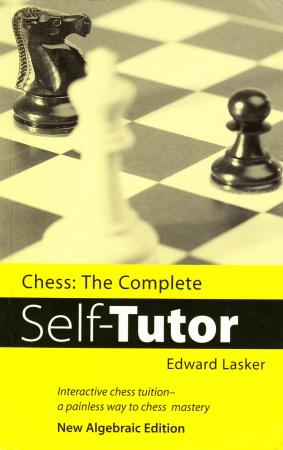
The back cover describes the book as ‘one of the longest established, yet still most innovative, introductory chess manuals’, ‘Lasker’s masterwork’ and ‘the definitive chess teaching manual’. We are, though, struck by the relative lack of publicity accorded to any of the editions published between 1972 and 1997.
Below is the inscription in our copy of the original US volume:
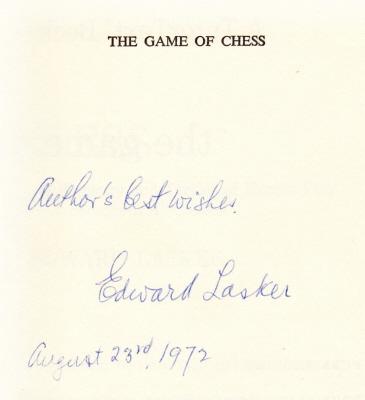
(7762)
C.N. 7762 asked about a remark attributed by Edward Lasker to Siegbert Tarrasch:
‘To win a pawn in the opening is usually a dangerous thing.’
Per Skjoldager (Fredericia, Denmark) notes that on page 294 of the October-November 1913 Wiener Schachzeitung Nimzowitsch attributed to Tarrasch the following observation:
‘Die Annahme des Gambits ist prinzipiell verfehlt, weil gefährlich.’
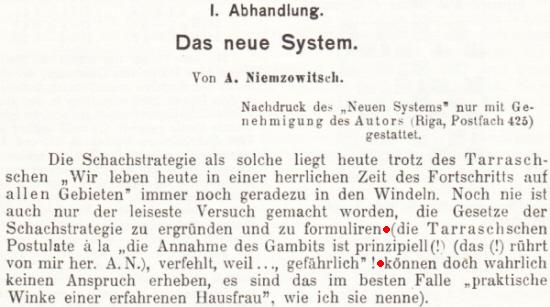
(7770)
Stuart Rachels (Tuscaloosa, AL, USA) asks about the observation ‘When you see a good move, look for a better one’, which he has seen ascribed, without a source, to Emanuel Lasker.
The phrase ‘without a source’ readily takes us, by way of example, to Andrew Soltis. From page 300 of his book The Inner Game of Chess (New York, 1994):
‘White failed to heed Emanuel Lasker’s sage advice: When you see a good move, don’t make it immediately. Look for a better one.’
It is certainly true that the phrase has often been attributed to Lasker; see, for instance, a quote in Alfred Kreymborg and Chess.
It has also been attributed to Tarrasch, and not always favourably. From page 36 of Better Chess by Bill Hartston (London, 1997):
‘But when you’ve fumbled and analysed, and all the signposts point to one particular move, when is the moment to sign contracts and play it? The great German player Dr Siegbert Tarrasch advised: “When you’ve found a good move, look for a better one.” What nonsense! When you’ve found a good move, play it! Good moves are few and far between. Don’t talk yourself out of them. But make sure they are as good as you think.’
A related point regarding Tarrasch was made by Capablanca on page 71 of A Primer of Chess (London, 1935), in the section headed ‘Main rules and ethics of the game’:
‘Do not hover over the pieces too much. It is unethical and it leads to errors. The celebrated German master, Dr Tarrasch, used to sit with his hands under his thighs to avoid hesitation and to keep from moving hastily. It is not bad to move quickly, but it is bad to move hastily.’
Next, a paragraph from page 78 of Chess Catechism by Larry Evans (New York, 1970):
‘It was Steinitz who observed that when you see a good move, wait – and look for a better one.’
Exact citations will be welcome, and in the meantime we offer a comment by Leopold Hoffer in the The Field, 1886, which was quoted on page 121 of Johannes Zukertort Artist of the Chessboard by Jimmy Adams (Yorklyn, 1989):
‘If Zukertort sees a good move, he makes it; if Steinitz sees a good move, he looks out for a better one.’
Many other such remarks could be quoted, but in any case the sentiments in question were expressed 500 years ago by Damiano in Questo libro e da imparare giocare a scachi et de le partite, as noted, for instance, by H.J.R. Murray on page 788 of A History of Chess (Oxford, 1913): ‘when you have a good move look for a better’. See too page 95 of Wonders and Curiosities of Chess by Irving Chernev (New York, 1974), in a feature entitled ‘Damiano’s centuries-old advice still good today’.
(7837)
Further to various earlier comments (see Chess: the Need for Sources and C.N. 3525) about Chess Rules of Thumb by Lev Alburt and Al Lawrence (New York, 2003), two other entries relevant to Tarrasch are shown here.
Page 64:
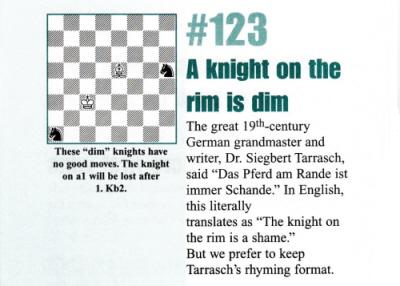
As mentioned in C.N. 8718, no firm connection has been established with Tarrasch (who has also been described as a nineteenth-century figure by Cathy Forbes; see page 268 of Kings, Commoners and Knaves).
Page 105:
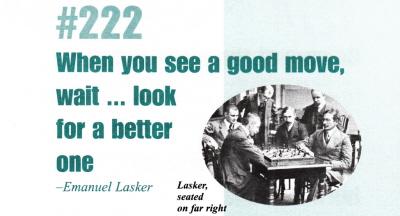
The advice attributed to Lasker is many, many centuries older, as shown in C.N.s 7837 and 7841. Nor should Lasker’s name appear in connection with the well-known photograph, which was the frontispiece to Der Schachwettkampf Schlechter-Tarrasch (Leipzig, 1912):
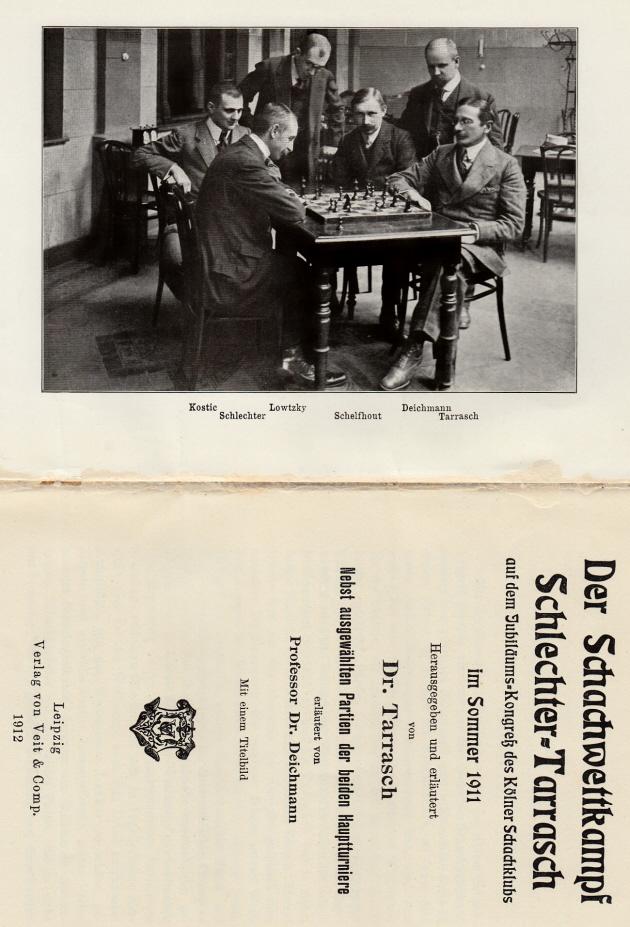
(8738)
Below is a letter which Tarrasch contributed on page 20 of the 18 January 1929 edition of the Manchester Guardian:

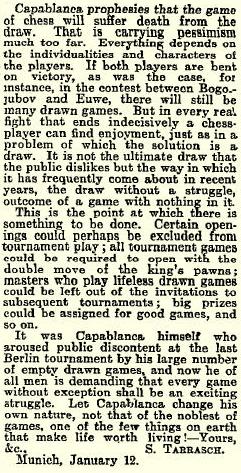
(8480)
C.N. 7837 quoted a remark by Capablanca on page 71 of A Primer of Chess (London, 1935):
‘Do not hover over the pieces too much. It is unethical and it leads to errors. The celebrated German master, Dr Tarrasch, used to sit with his hands under his thighs to avoid hesitation and to keep from moving hastily. It is not bad to move quickly, but it is bad to move hastily.’
Did Tarrasch ever recommend the practice in his writings, and, in any case, who was the first to make such a recommendation?
Page 263 of book two of The Middle-Game by M. Euwe and H. Kramer (London, 1965) has the following:
‘Apart from the usual advice to weigh up everything carefully and to practise self-control, the best advice is that given by “Woodshifter”, a regular contributor to the American monthly Chess Review – “Sit on your hands!”’
For ‘Woodshifter’ read ‘Woodpusher’. The relevant ‘Tales of a Woodpusher’ article by Fred M. Wren was entitled ‘It helps to sit on your hands’ and appeared on pages 28-29 of the May 1947 Chess Review. The key section:
‘Having decided early in my chess experience never to touch a piece without moving it and never to take back a move already made, I found that, although I lost a lot of games after I learned to sit on my hands, I was also winning a lot which could easily have been lost through hurried, unconsidered moves. So, for what it is worth, here is my advice to all players who have trouble in keeping their hands off the chess pieces.
1. Sit on your hands! Yes, I mean it. Sit on them and hold them down by the weight of your body until you have decided on your move. You will not have to keep this up very long before you can give up the physical weight on your hands, as you will quickly learn to sit on them mentally, with equally good results. But, in the meantime, sit on ’em!
2. Once you have decided what move to make, take another quick look at the position, both as it is before the move and also as it will look after you have made the move. Then, if the move still looks best to you, make it and abide by the results.
Never take a move back. If you adopt this practice in skittles and friendly play, you will never have any trouble on this point in match or tournament play.’
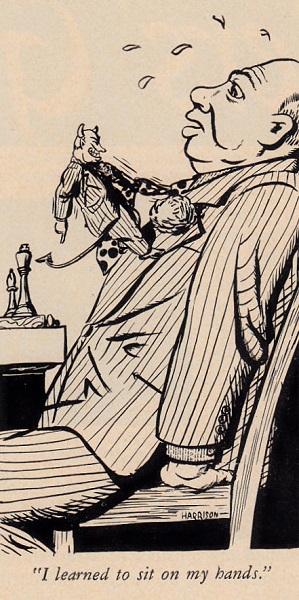
Source: Chess Review, May 1947, page 29
(8890)
From page 164 of Das Schachspiel by Siegbert Tarrasch (Berlin, 1931):
‘Wenn man einen starken, selbst einen entscheidenden Zug sieht, muß man sich immer die Frage vorlegen, ob es nicht einen noch stärkeren gibt!’
The English version on page 122 of The Game of Chess (London, 1935):
‘When one sees a strong, even a decisive move, one must always ask oneself if there is not a still stronger one.’
(9303)
See too C.N. 7837, 9309 and 10087 (Damiano and Boden).
When was the first occurrence in print of Tarrasch’s term ‘amaurosis scachistica’ (chess blindness)?
The phrase was in the title of an article at the end (pages 452-455) of his book Die moderne Schachpartie (various editions, of which the first was published in 1912):
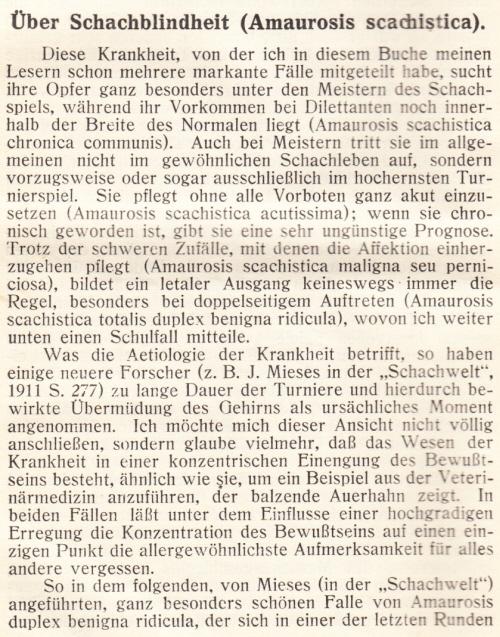
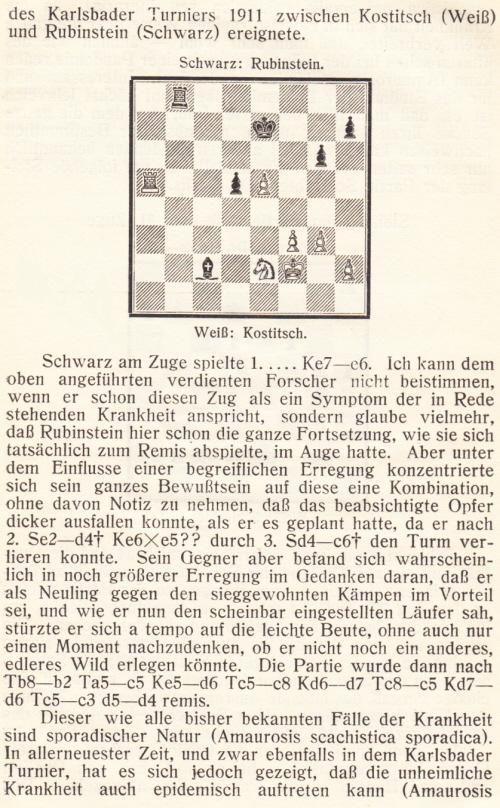
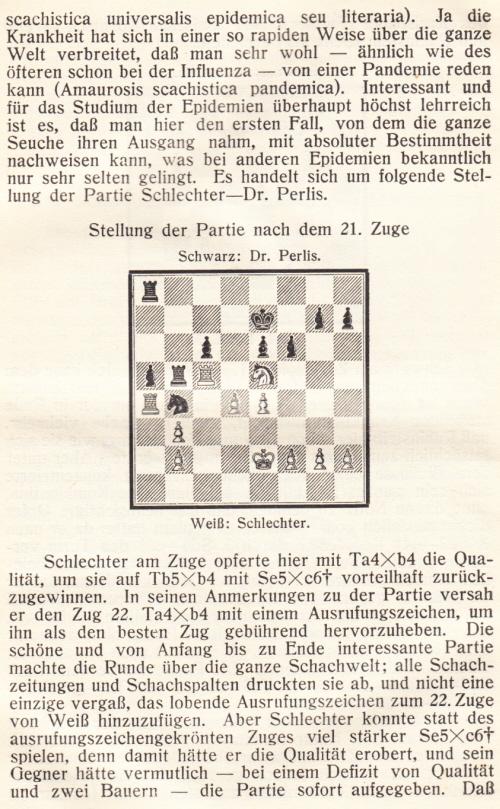
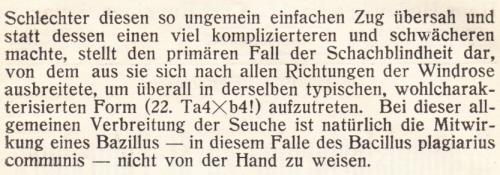
From the Preface to the first edition (page ix):
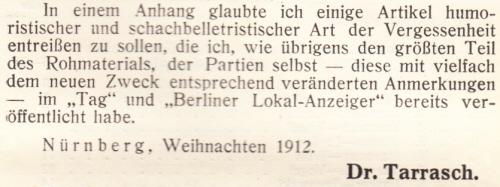
Is it possible to identify the newspaper in which the article on ‘amaurosis scachistica’ originally appeared?
Tarrasch republished the article, with minor rewording, on pages 337-340 of Tarrasch’s Schachzeitung, 1 September 1933.
As regards English-language publications, the Latin term was mentioned in a review of Die moderne Schachpartie on page 159 of the July 1913 American Chess Bulletin, although rendered as ‘amaurosis schachistica’. An oft-seen spelling is ‘amaurosis scacchistica’, e.g. on page 174 of All About Chess by I.A. Horowitz (New York, 1971).
(8187)
Game 45 in Chernev’s The Most Instructive Games of Chess Ever Played is ‘S. Tarrasch-S. Vogel, Nuremberg, 1910’. Under the heading ‘The Galloping Knight’, it is described as ‘superb position play by a master in that domain’.
The game was the second of three (numbers 4, 7 and 114) between the two players in Tarrasch’s Die moderne Schachpartie (first published in 1912). All were played in Nuremberg, game 4 in 1910 and game 114 in 1909. Tarrasch provided no details regarding the occasion, and in each case his opponent was named only as ‘Herr Vogel’. On the other hand, when two of the encounters were given in Tarrasch’s Best Games of Chess by Fred Reinfeld (London, 1947) Black was named as ‘S. Vogel’ each time.
It is unclear whether Tarrasch’s opponent was the Vogel who participated in a tournament in Nuremberg in 1888 (Deutsche Schachzeitung, September 1888, pages 262 and 265). No other information about him was given there beyond ‘Vogel (Nürnberg)’.
In its 1909 volume the Deutsche Schachzeitung had a few references to J. Vogel of Nuremberg. See too page 272 of Deutsches Wochenschach, 8 August 1909. A game Vogel v W. Schmidt from the ‘Hauptturnier zu Nürnberg’ was published on pages 133-134 of Schachjahrbuch für 1909 by Ludwig Bachmann (Ansbach, 1909):
1 e4 e6 2 d4 d5 3 exd5 exd5 4 Nf3 Nf6 5 c4 c6 6 Nc3 Bb4 7 Bd3 O-O 8 O-O Bg4 9 Bg5 Nbd7 10 Qc2 Qc7 11 cxd5 Bxf3 12 gxf3 Bxc3 13 bxc3 cxd5 14 Kh1 h6 15 Bd2 Kh8 16 Rg1 Ng8 17 Rg3 Ndf6 18 Rag1 Nh5 19 Rg4 f5 20 Rh4 Qf7 21 Qc1 Rac8 22 Qf1 g6 23 Qh3 Kh7 24 Qg2 Ngf6 25 Qh3 Ng8
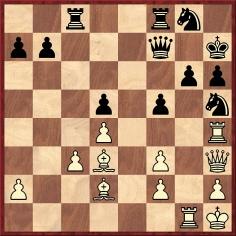
26 Rxg6 Qxg6 27 Rxh5 Kg7 28 Rxf5 Rc6 29 Rg5 hxg5 30 Bxg6 Kxg6 31 Qg4 Rf5 32 h4 Nf6 33 Qg2 Nh7 34 f4 Ra6 35 hxg5 Rxa2 36 Be3 a5 37 Qh3 Nf8 38 Qh6+ Kf7 39 Qb6 Ra1+ 40 Kg2 Ra3 41 Qb2 Ra4
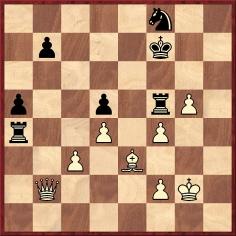
42 Qc2 Resigns.
The Ehrentafel (roll of honour) on page 421 of the 27 December 1914 Deutsches Wochenschach listed under the Schachklub Noris of Nuremberg: ‘Vogel, Johann, Kaufmann†’. Johann Vogel was also named on pages 59-60 of the February 1915 Deutsche Schachzeitung as being among those who had ‘fallen on the field of honour’ (‘auf dem Felde der Ehre sind gefallen’). The Ehrentafel on page 259 of Schachjahrbuch für 1914. II Teil by L. Bachmann (Ansbach, 1914) included ‘Vogel, Johann, Nürnberg’. Page 20 of the January-February 1915 Wiener Schachzeitung reported: ‘Hans Vogel vom Schach-Klub “Noris” in Nürnberg ist auf dem Felde der Ehre gefallen.’
Can readers help us to build on these preliminary findings?
(8197)
The haphazard dissemination of quotes is illustrated by a famous Tarrasch remark:
‘Chess is a terrible game. If you have no centre, your opponent has a freer position. If you do have a centre, then you really have something to worry about.’
Some brief observations:
1) The quote appears on countless English-language websites, without any source;
2) No German version is easily traceable on the Internet;
3) The English version was given by F. Reinfeld on pages 61-62 of Tarrasch’s Best Games of Chess (London, 1947) in a note to 19...Nf6 in Schiffers v Tarrasch, Leipzig, 1894;
4) After 16...Rfe8 in the same game, Tarrasch wrote in Dreihundert Schachpartien (the page number varies according to the edition):
‘Ein schreckliches Spiel, das Schachspiel! Hat man kein Zentrum, so hat der Gegner die freiere Stellung; und hat man eins, dann macht es einem schwere Sorge!’
(8331)
Information is sought about Siegbert Tarrasch’s absence from New York, 1924 and, in particular, about a claim by Al Horowitz on an unnumbered page in Solitaire Chess (New York, 1962):
‘What really broke his spirit in the end was his non-admittance to the entry list of the great New York tournament of 1924. Lasker, who had been chosen to compete, had been wrangling for a higher retainer. The committee warned him that, if he didn’t accept the offer, Tarrasch would be his replacement. Lasker quickly came to terms.’
(8663)
Supplying links to parts one and two of an article by Hanon W. Russell about New York, 1924, Pete Klimek (Berkeley, CA, USA) notes that the first part has some references to Tarrasch.
(8666)
Regarding the ninth game in the match between Tarrasch and Chigorin, below is an extract from pages 50-51 of Der Schachwettkampf zwischen Dr. S. Tarrasch und M. Tschigorin, Ende 1893 by Albert Heyde (Berlin, 1893):
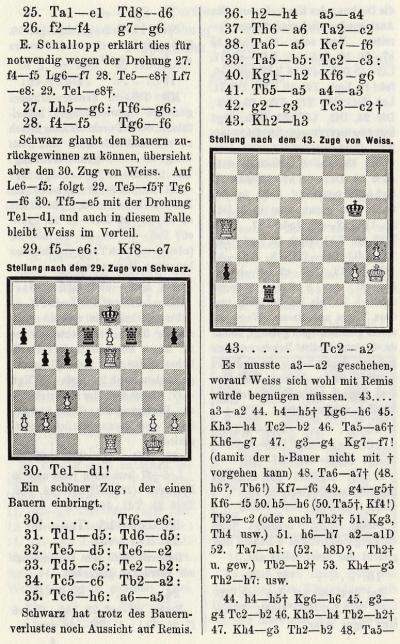
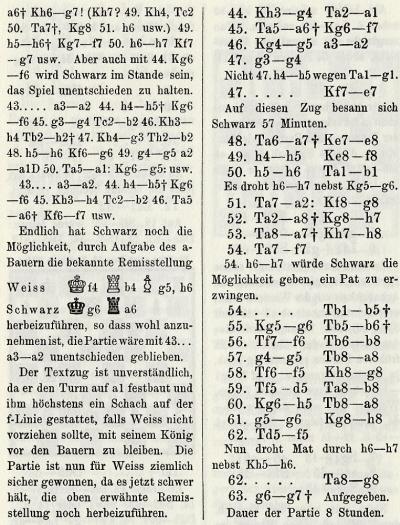
The relevant part of Tarrasch’s Dreihundert Schachpartien (third edition, Gouda, 1925):
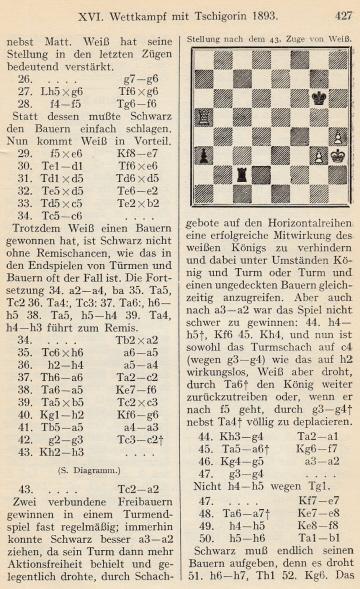
The Tarrasch v Chigorin ending has been widely discussed; see, for example, page 248 of volume five of Comprehensive Chess Endings by Yuri Averbakh and Nikolai Kopayev (Oxford, 1987), which mentioned analysis by Maizelis. The full game was annotated on pages 92-94 of the first Kasparov Predecessors book (London, 2003), with a reference at move 43 to Kling and Horwitz.
(8766)
‘The first recognized world championship was played between two Germans – Tarrasch and Lasker – and took place at Munich in 1908, resulting in a victory for Lasker.’
Source: Learn to Play Chess by King’s Pawn, page 6.
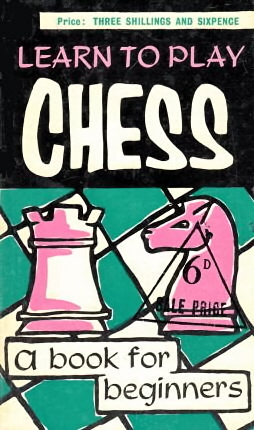
The book, undated, was published by The Liverpolitan Ltd. in Birkenhead, England. Its entry on page 132 of D.A. Betts’s Annotated Bibliography gave 1961 as the year of publication and indicated that the identity of King’s Pawn was unknown.
(8781)
From an otherwise blank page at the start of Queen’s Gambit and other Close Games by L. Pachman (London, 1963):

The remark is also attributed to Tarrasch in other books by the same author, and elsewhere in chess literature, but in most sources it is ascribed to Nimzowitsch as a riposte to Tarrasch. From page 154 of Nimzovich the hypermodern by Fred Reinfeld (Philadelphia, 1948):
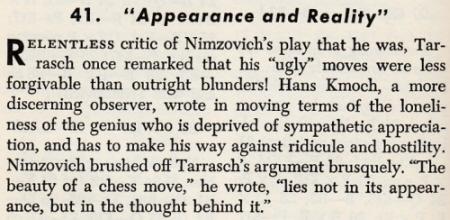
When did the particular wording ‘The beauty of a chess move lies not in its appearance, but in the thought behind it’ first appear in print?
Nimzowitsch wrote about ‘bizarre’ and ‘ugly’ moves on page 229 of Die Praxis meines Systems (Berlin, 1930). His text is shown below, together with the translation on page 329 of The Praxis of My System (London, 1936):
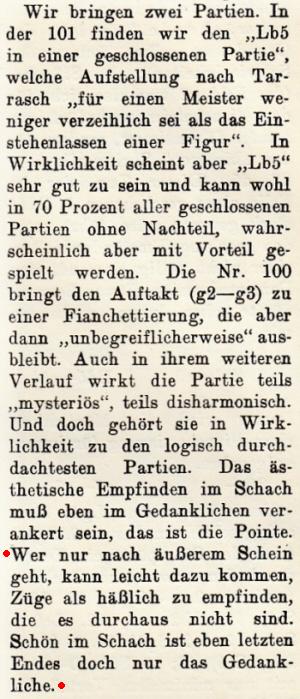
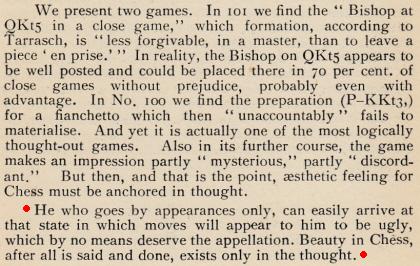
A detailed account of the Tarrasch-Nimzowitsch disputes is provided in Aron Nimzowitsch On the Road to Chess Mastery, 1886-1924 by Per Skjoldager and Jørn Erik Nielsen (Jefferson, 2012).
(8804)
A game from Am Sprudelnden Schachquell 1876-1926 by F. Palitzsch (pages 104-106):
Hans Gebhard – Siegbert Tarrasch
Offhand game, Munich, 18 October 1925
Albin Counter-Gambit
1 d4 d5 2 c4 e5 3 dxe5 d4 4 Nf3 Nc6 5 g3 Nge7 6 Bg5 Be6 7 Nbd2 Qd7 8 Bxe7 Bxe7 9 Bg2 O-O-O 10 O-O g5 11 b4 g4 12 b5 Na5 13 Ne1 Nxc4 14 Qa4 Nxd2
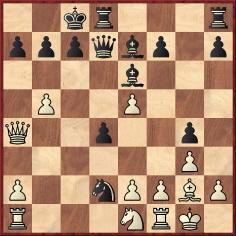
15 Bc6 Kb8 16 Bxd7 Rxd7 17 Nd3 Nxf1 18 Rxf1 Rhd8 19 Rc1 Bf5 20 Qa5 Rc8 21 Rc4 Rd5 22 a4 c5 23 Qd2 Rdd8 24 Qf4 Be6
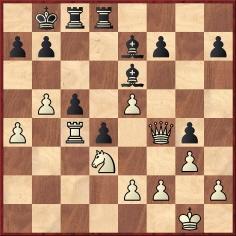
25 Nb2 Ka8 26 a5 h5 27 Qc1 Kb8 28 Qc2 h4 29 a6 hxg3 30 fxg3 Bd5 31 Qf5 bxa6 32 bxa6 Rc6 33 Ra4 c4 34 Nxc4 Bxc4 35 Rxc4 Rxc4 36 Qxf7 Rc7 37 Qb3+ Ka8 38 Qe6 d3 39 exd3 Rxd3 40 Qxg4 Bc5+ 41 Kh1 Rd8 42 h4 Kb8 43 Kg2 Bb6 44 e6 Re8 45 Qe4 Ree7 46 Qe5 Rh7 47 Qd6
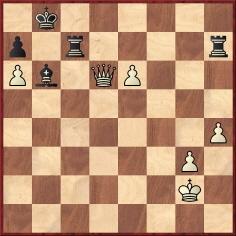
47...Bc5 48 Qd8+ Rc8 49 Qd3 Re7 50 Qd5 Rec7 51 h5 Be7 52 Kh3 Rd8 53 Qb3+ Ka8 54 h6 Bg5 55 Qf3+ Kb8 56 Qh5 Bf6 57 Qg6 Rf8 58 g4 Rc3+ 59 Kg2 Bd4 60 Qb1+ Bb6 61 Qb2 Rf2+ 62 Qxf2 Bxf2 63 Kxf2 Kc7 64 g5 Rh3 and Black won.
(8812)
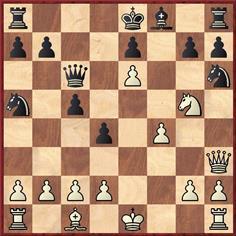
Black to move
Black now played 12...Rd8, but instead should he have attempted to consolidate his position with 12...g6, 13...Bg7 and 14...O-O, or, alternatively, with 12...Qd5, followed by queen’s-side castling?
Reuben Fine recommended those ‘correct’ lines on page 188 of The Middle Game in Chess (New York, 1952) when annotating the game Tarrasch v Meiser:
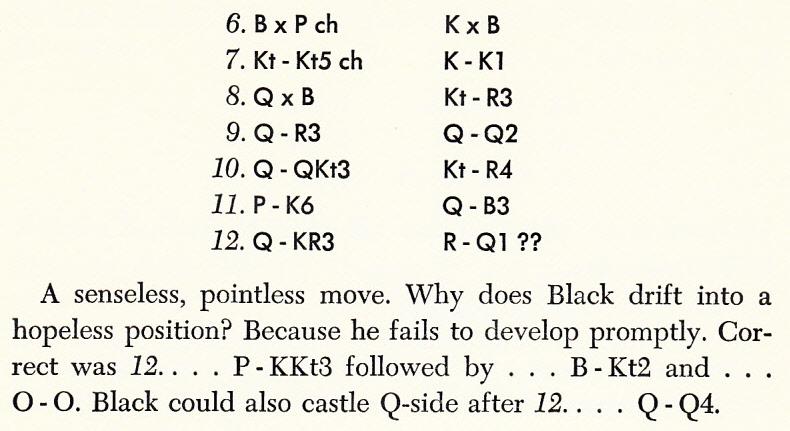
The game was included in Tarrasch’s Dreihundert Schachpartien. Below, for instance, is page 267 of the third edition (Gouda, 1925):
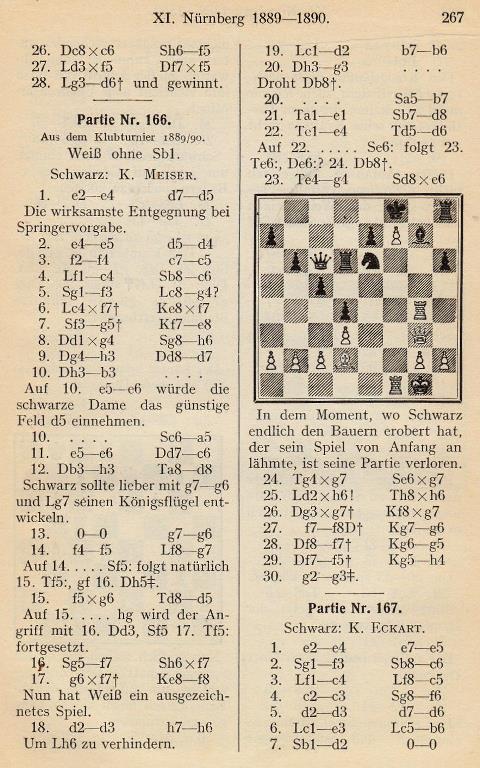
The earliest correction of Fine’s note that we can cite was by C.R. Worthing of Oxford in a letter dated 10 January 1954 on page 98 of the March 1954 CHESS:
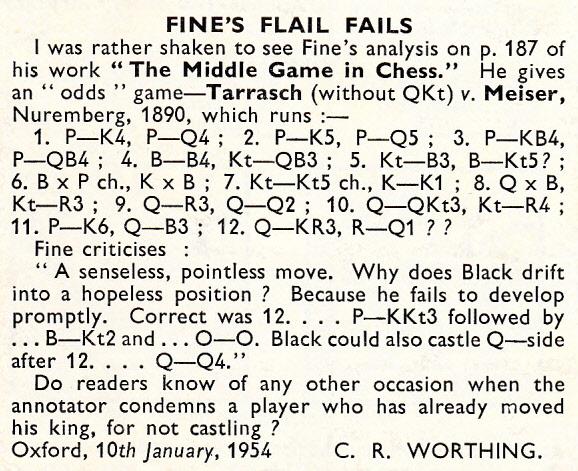
The oversight in The Middle Game in Chess was also pointed out by H. Vaughan of Chatswood, Sydney on page 133 of Chess World, July 1960.
(8875)
Pete Klimek (Berkeley, CA, USA) notes that illegal castling was also proposed in the note to the Tarrasch v Meiser game on page 306 of Tarrasch’s Best Games of Chess by Fred Reinfeld (London, 1947):
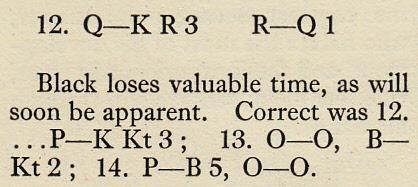
(8878)
It may be imagined that ‘instant books’ on chess matches are a modern development, but the first sentence in the Foreword to Tarrasch’s 62-page work Der Schachwettkampf Marshall-Tarrasch im Herbst 1905 (Nuremberg, 1905) reported that the manuscript was ready for printing one week after the match ended and that the book appeared a fortnight later:
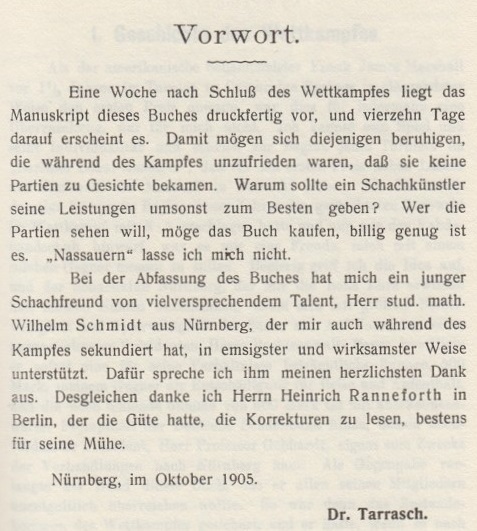
(8914)
A principle put forward by Tarrasch:
‘Better a mobile pawn majority on a flank than a blocked passed pawn in the centre.’
Source: page 336 of The Game of Chess by S. Tarrasch (London, 1935). The original German text on page 424 of Das Schachspiel (Berlin, 1931) was:
‘Besser eine mobile Bauernmajorität auf einem Flügel als ein gestoppter Freibauer im Zentrum.’
The position presented by Tarrasch to illustrate the principle came after 1 d4 d5 2 c4 dxc4 3 Nf3 c5 4 d5 e6 5 e4 exd5 6 exd5 Nf6 7 Bxc4 Bd6:
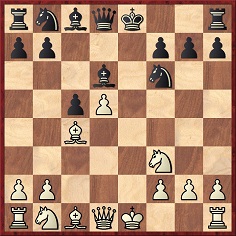
(9379)
Jean-Pierre Rhéaume (Montreal, Canada) notes that Tarrasch gave the same principle in the section on passed pawns on page 201 of The Game of Chess (London, 1935):
‘It is better, therefore, to have a mobile majority of pawns on a flank than a blocked passed pawn in the centre, a very important principle laid down by the author.’
From page 285 of the original edition, Das Schachspiel (Berlin, 1931):
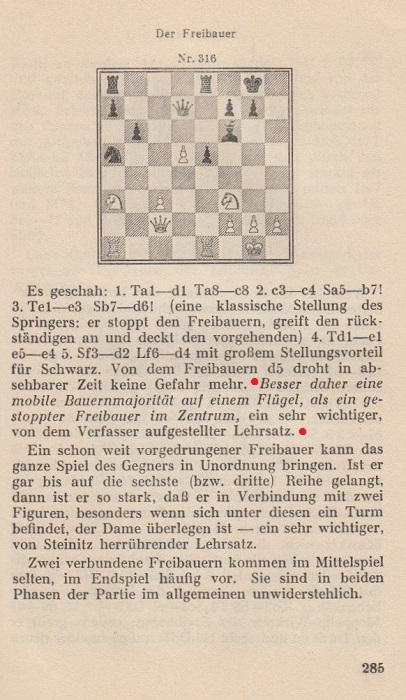
(9382)
Siegbert Tarrasch’s prize-winning game against Edgard Colle, Meran, 14 February 1924:
1 d4 d5 2 c4 e6 3 Nc3 c6 4 Nf3 Nf6 5 Bg5 Be7 6 e3 Nbd7 7 Bd3 dxc4 8 Bxc4 b5 9 Bd3 a6 10 O-O c5 11 Qe2 c4 12 Bc2 Bb7 13 e4 O-O 14 e5 Nd5 15 Qe4 g6 16 Qh4 f6 17 exf6 Bxf6 18 Ne4 Bxg5 19 Nexg5 Qe7 20 Rae1 Rf6 21 g3 Re8 22 Nd2 Nb4 23 Be4 Bxe4 24 Ndxe4 Rff8 25 Nd6 e5 26 Nxe8 Rxe8 27 dxe5 Nd3 28 Re2 h5 29 f4 Qc5+ 30 Kg2 Nf6 31 h3 b4 32 Nf3 Qc6 33 Kh2 Ne4
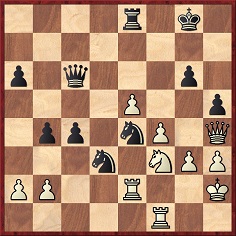
34 f5 Nxe5 35 Nd4 Qd5 36 Rxe4 Ng4+ 37 Rxg4 hxg4 38 Qxg4 Re4 39 Qxg6+ Resigns.
The position after Black’s 12th move had arisen in a forgotten game which Tarrasch played in Geneva on 5 April 1920 against an unnamed group of the strongest members of the city’s chess club:
1 d4 d5 2 c4 e6 3 Nc3 Nf6 4 Bg5 Be7 5 e3 c6 6 Bd3 Nbd7 7 Nf3 dxc4 8 Bxc4 b5 9 Bd3 a6 10 O-O c5 11 Qe2 c4 12 Bc2 Bb7 13 Rad1 O-O 14 e4 Re8 15 e5 Nd5 16 Ne4 f6 17 exf6 gxf6 18 Bc1 Nf8 19 Ne1 f5 20 Ng3 Bg5 21 f4 Bh6 22 Qh5 Qf6 23 Qh3 Qg6 24 Nh5 Nf6 25 Nxf6+ Qxf6 26 Nf3 Bg7 27 Ne5 Rad8 28 Rfe1 Ng6 29 Be3 Qh4 30 Qg3 Bd5 31 Rd2 Qxg3 32 hxg3 Nf8
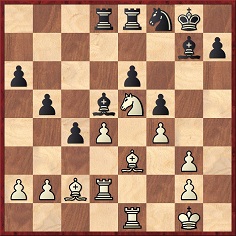
33 g4 Bxe5 34 fxe5 fxg4 35 Kf2 Rc8 36 Rdd1 Rc7 37 Rh1 g3+ 38 Kg1 Ng6 39 Rh3 Rf7 40 Rxg3 Kg7 41 Bg5 Rg8 42 Bf6+ Kf8 43 Rf1 Ke8 44 Rf2 Kd7 45 Ra3 Ra8 46 Rg3 Rg8 47 Kf1 Kc6 48 Ke1 a5 49 Rg5 a4 50 a3 Ra7 51 Rg3
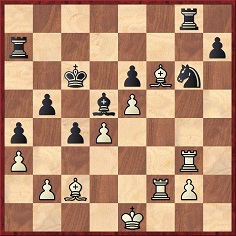
51...b4 52 axb4 Kb5 53 Ra3 Kxb4 54 Bg5 Kb5 55 Bd2 Ne7 56 Bxh7 Rxg2 57 Rxg2 Bxg2 58 Rg3 Bd5 59 Rg7 Nc6 60 Rxa7 Nxa7 61 Ke2 Nc6 62 Bc3 Nb4 63 Ke3 a3 64 bxa3 Na2 65 Kd2 Ka4 66 Bb1 Kxa3 67 Bxa2 Drawn.
Source: Schweizerische Schachzeitung, June-July 1920, pages 86-89. The times were given as White 6½ hours and Black 5½ hours.
(9765)
Tarrasch gave this position on pages 202-203 of Das Schachspiel (Berlin, 1931):

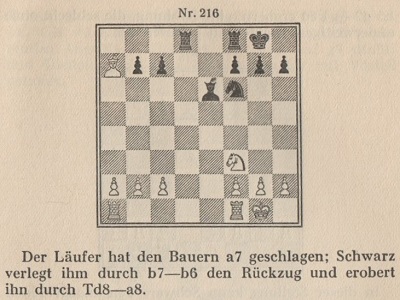
The position was on pages 144-145 of the English edition, The Game of Chess (London, 1935).
(9871)
See the section on 29...Bxh2 in our feature article on the 1972 Spassky v Fischer match.
From page 62 of the book mentioned in C.N. 9884, Introduction to Chess by Christopher Nicole (London, 1973):
‘Wilhelm Steinitz, the first recognized world champion, used to say, “Stall, stall, and then stall some more. Sooner or later your opponent will get an idea, and that idea will smell”.’
We do not know where or when Steinitz ‘used to say’ this, or what grounds I.A. Horowitz had for writing the following on page 27 of the February 1946 Chess Review:
‘... Steinitz, whose famous proverb had suggested the proper strategy: “Stall, stall and stall some more. Your opponent will be sure to get an idea. It will be sure to be rotten, and you will win.”’
Tarrasch is also mentioned in this connection, e.g. on page 254 of The Wisest Things Ever Said About Chess by Andrew Soltis (London, 2008):
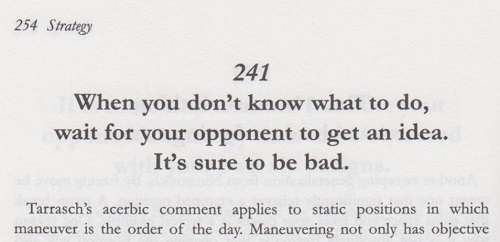
Naturally no source was given.
(9894)
Sean Robinson (Tacoma, WA, USA) notes three translations (with the adjectives ‘curious’, ‘peculiar’ and ‘unique’) of a remark by Nimzowitsch about Tarrasch’s Die Moderne Schachpartie:
Our correspondent writes:
‘The three adjectives have slightly different connotations. What was written originally?’
Nimzowitsch’s text on page 73 of the March-April 1913 Wiener Schachzeitung was:
‘Die von Dr. Tarrasch unter obigem Titel herausgegebene Partiensammlung stellt eigentlich ein kritisches Lehrbuch der Eröffnungen in eigenartiger Form dar.’
Mr Robinson also comments that a few paragraphs later the books have, respectively, these translations for Nimzowitsch’s description of Tarrasch: ‘he is relentlessly single-minded’, ‘he is inexorably rigid’ and ‘we see a relentless linearity’.
In the Wiener Schachzeitung Nimzowitsch wrote that Tarrasch was ‘von einer unerbittlichen Gradlinigkeit’.
(10436)
From page iv of World’s Championship Matches, 1921 and 1927 (New York, 1977), in Irving Chernev’s 11-page Introduction to that Dover edition:
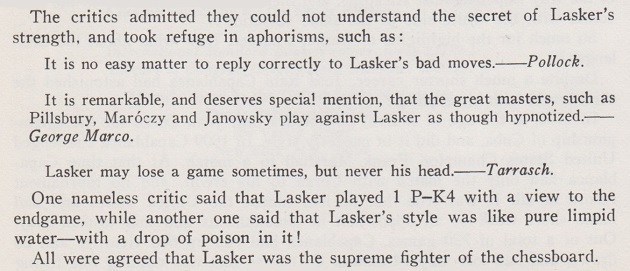
For the Pollock ‘aphorism’ (in the Hastings, 1895 tournament book), see our feature article on him. The source of Marco’s observation (Wiener Schachzeitung, 1900) was specified in C.N. 10546. The comment about P-K4 was discussed on page 297 of Chess Facts and Fables and in C.N. 9329. The water/poison remark was by Mieses (Berliner Tageblatt and the San Sebastián, 1911 tournament book), as shown in C.N.s 3160 and 3161 (see Chess: the Need for Sources).
That leaves Tarrasch’s remark, ‘Lasker may lose a game sometimes, but never his head’. It was on page 137 of Tarrasch’s book on St Petersburg, 1914:
‘Lasker verliert mitunter eine Partie, aber niemals den Kopf.’
It appeared in connection with Lasker’s move 24 Rc5 in his victory over Alekhine in the first round of the final section. Alekhine has just played 23...Nf5-e3:
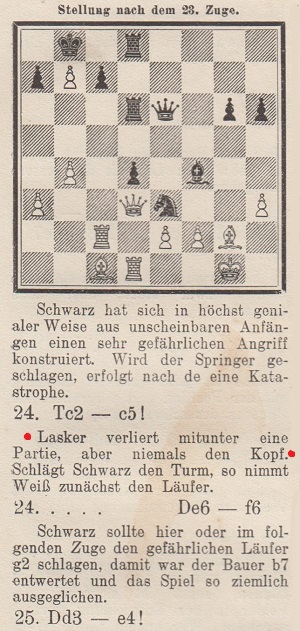
(10550)
Olimpiu G. Urcan writes:
‘On the topic of similar photographs (C.N.s 5372, 5405, 6709, 7429 and 7724), page 193 of the recent Pollock biography reproduces a picture of him from page 138 of Sportfolio: Portraits and Biographies of Heroes and Heroines of Sport and Pastime (London, 1896). Our caption states that the photograph, by George Bradshaw, is also featured in the Hastings, 1895 tournament book edited by Horace F. Cheshire. In fact, the Pollock portrait given opposite page 46 of the latter work (shown in C.N. 10457) is slightly, almost imperceptibly, different, although undoubtedly taken on the same occasion:
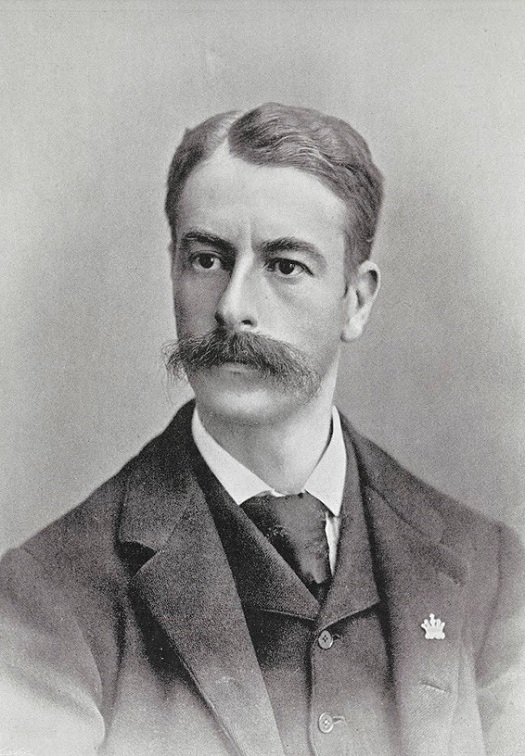
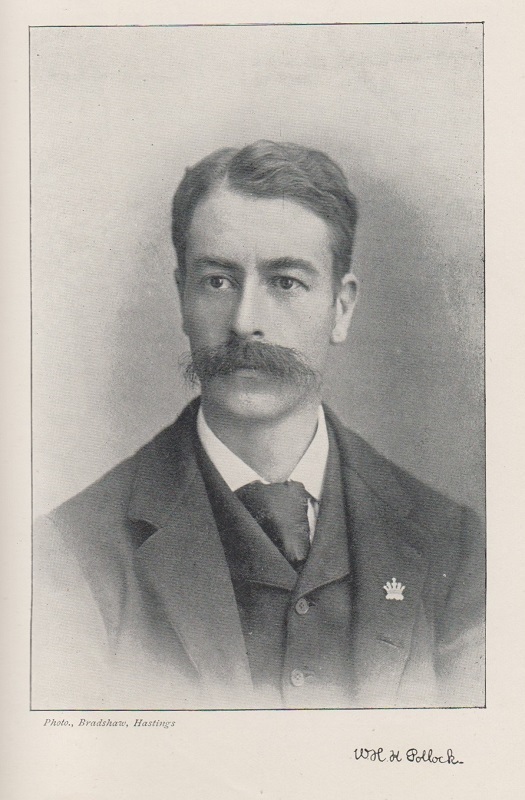
Our book also has photographs of Chigorin (page 58) and Tarrasch (page 185) taken during the Hastings, 1895 tournament by William James Donald. They are different from the Bradshaw photographs opposite pages 121 and 60 respectively of Cheshire’s book.
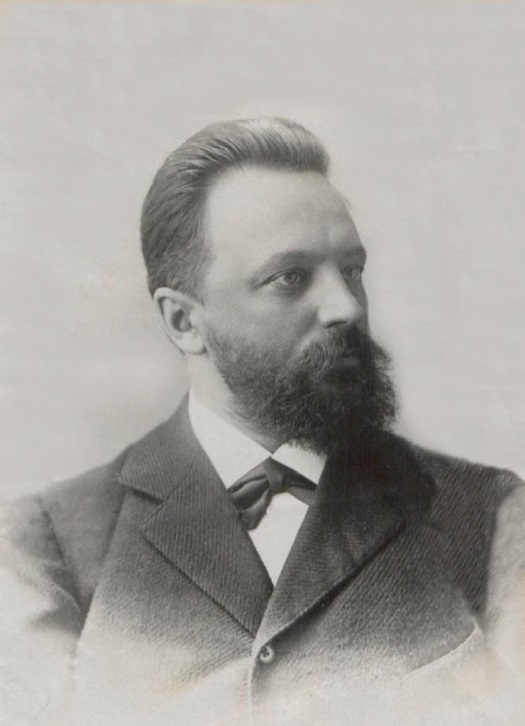
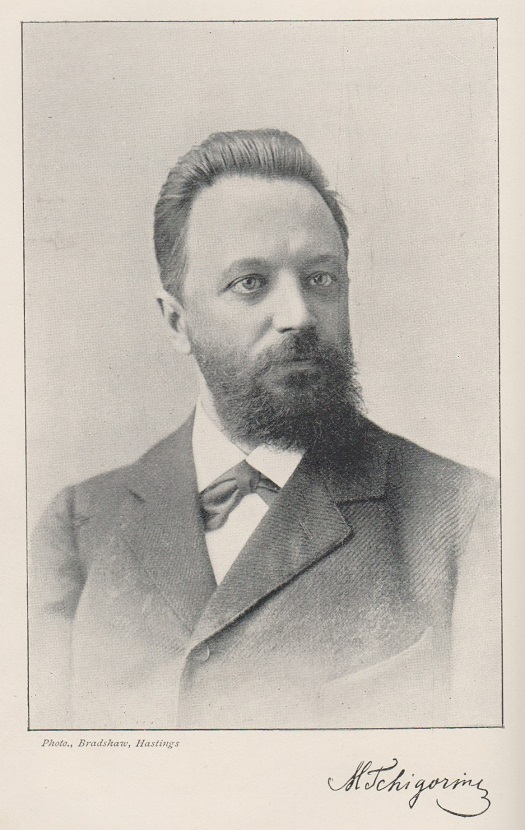
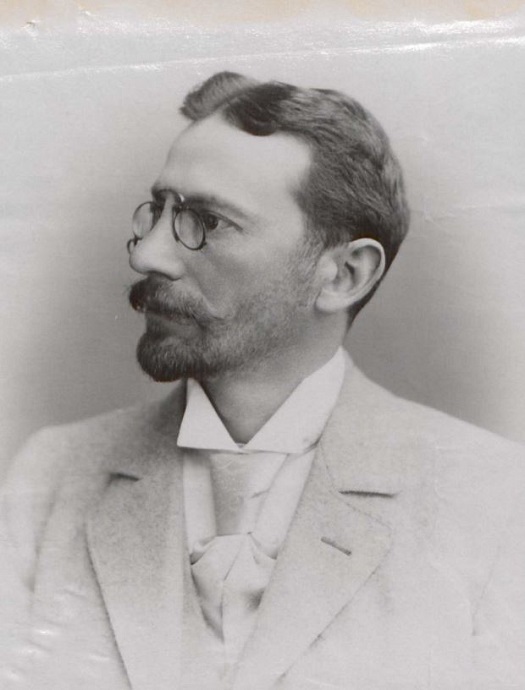
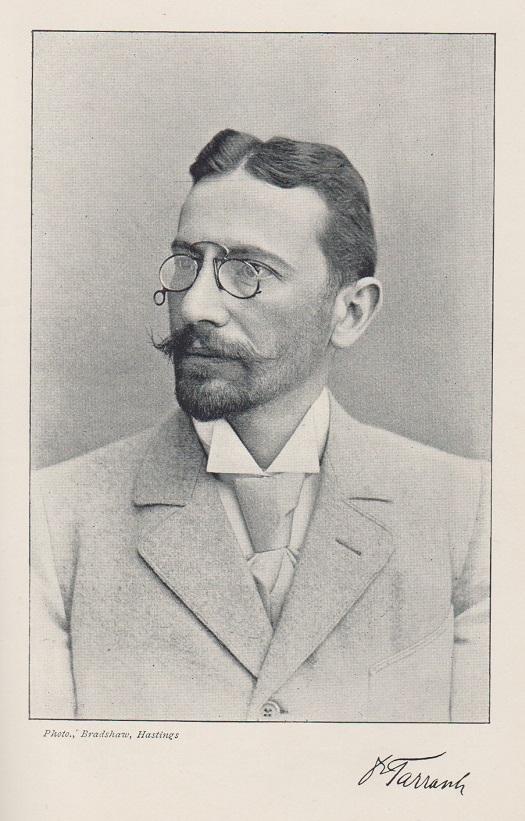
On the other hand, Donald’s photographs of Steinitz and Pillsbury in the Pollock volume (pages 181 and 189) are identical to the Bradshaw photographs in the tournament book. Can further versions of such 1895 photographs involving the Hastings participants be found?’
(10465)
From the plate section of American Chess Masters from Morphy to Fischer by Arthur Bisguier and Andrew Soltis (New York, 1974):
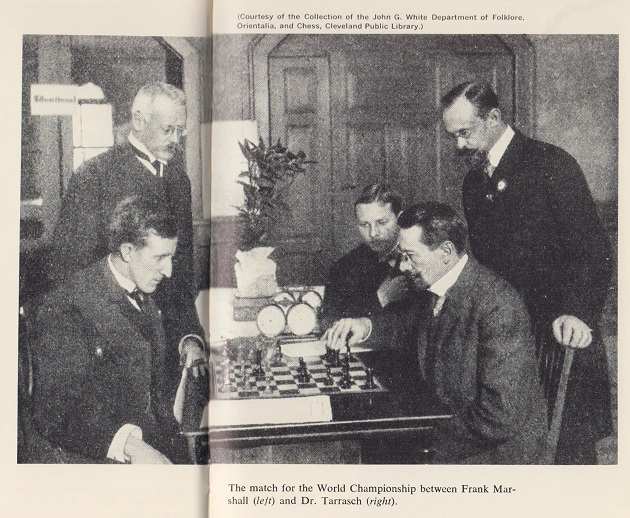
The reference to the world championship is an obvious mistake, but when was the photograph taken? Below are two more recent appearances:
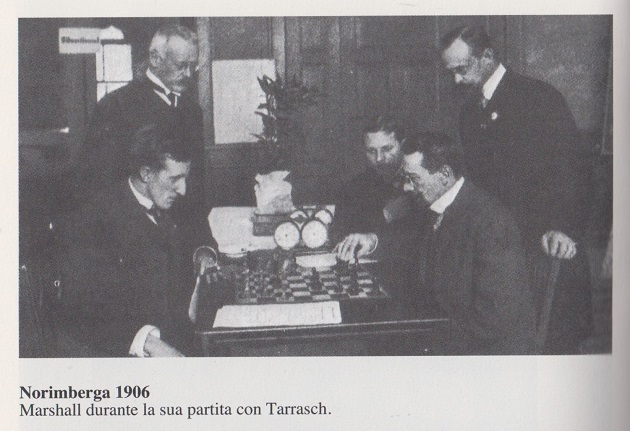
Tarrasch potere della logica by Jakov Nejstadt (Rome, 1996)
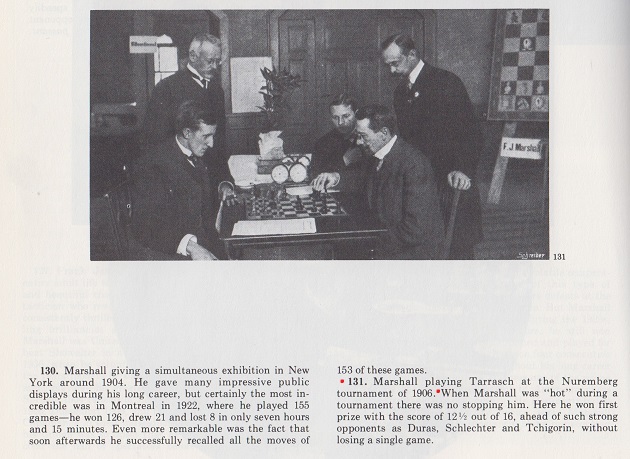
A Picture History of Chess by Fred Wilson (New York, 1981), page 74
Apparent confirmation that the occasion was the Nuremberg, 1906 tournament is on page 6 of Chess Review, December 1944, which showed a dated copy inscribed by Marshall:
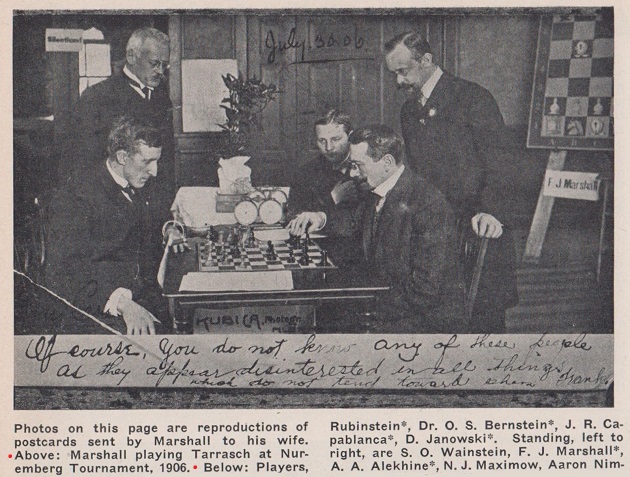
However, in the Nuremberg tournament (third round, 25 July 1906), Tarrasch had the white pieces against Marshall. (See the tournament book, pages 91-92.)
The photograph had been published the previous year, on page 318 of the October 1905 American Chess Bulletin:
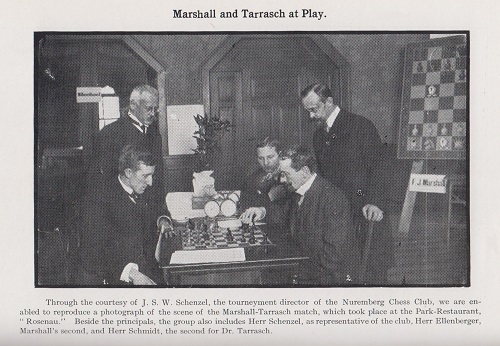
It seems to us that the position is from the 17th and final match-game, won by Tarrasch on 14 October 1905: 1 e4 e5 2 Nf3 Nc6 3 Bb5 Nd4 4 Nxd4 exd4 5 O-O c6 6 Bc4 Ne7 7 Qh5 d5 8 exd5 cxd5 9 Bb5+ Bd7 10 Bxd7+ Qxd7 11 Qe5 d3 12 cxd3 O-O-O 13 a3 Nc6 14 Qh5 g6 15 Qd1 Qf5 16 b4 Qxd3 17 Nc3 Bg7 18 Qa4 Kb8 19 Ra2 Nd4 20 Re1 Rc8 21 h3 Nf5 22 Qd7 Rhd8 23 Qxf7 Rc7 24 Qe6 Re7 25 Qxe7 Nxe7 26 Re3 Qc4 27 Rxe7 Bf8 28 Rxh7 d4 29 Rc2 dxc3 30 Rxc3 Qe2 31 g3 Bd6 32 Kg2 Rf8 33 White resigns.
The first part of C.N. 10671:
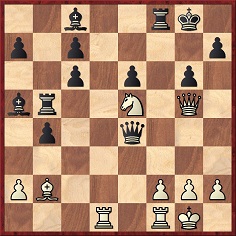
White to move
Play continued 21 Nf7 e5 22 Nh6+ Kh8 23 Rd8 Kg7 24 Rxf8 Kxf8 25 Qf6+ Ke8 26 Ng8 Resigns (Siegbert Tarrasch v Christian Kelz, Nuremberg, 1889 or 1890). The previous moves were 1 e4 e5 2 Nf3 Nc6 3 Bc4 Bc5 4 b4 Bxb4 5 c3 Ba5 6 d4 exd4 7 O-O dxc3 8 Qb3 Qf6 9 e5 Qg6 10 Nxc3 Nge7 11 Ba3 Rb8 12 Nd5 Nxd5 13 Bxd5 b5 14 e6 fxe6 15 Bxc6 dxc6 16 Ne5 Qe4 17 Qg3 g6 18 Qg5 b4 19 Rad1 O-O 20 Bb2 Rb5.
Tarrasch annotated the game in the ‘Nürnberg 1889-1890’ section of Dreihundert Schachpartien (various editions):

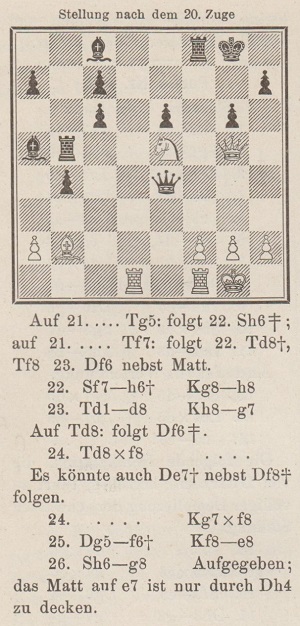
Up to move 18 the game followed the Dufresne one given in C.N.s 10667 and 10670. A note by Tarrasch on the possibility of 22 Qf6 (referred to later in the present item) would have been welcome.
From Michael Negele (Wuppertal, Germany):
‘According to page 226 of the Chess Monthly, April 1890, and various other sources, Lasker learned the rules of chess when he was 12 from his elder brother Berthold. As the future world champion was born on 24 December 1868, this must have been around 1881. The previous year he had moved from his parents’ home in Berlinchen to live in Berlin with Berthold, who was eight years his senior. Although fascinated by chess almost immediately, Emanuel stated on several occasions that he really learned how to play chess only a couple of years later, when “for over a year” he did not attend school (Ostrauer Zeitung, 5 January 1929; see also the interview in C.N. 9846). Research and examination of school records indicate that this period of intense chess immersion was in 1885; towards the end of that year his parents removed him from the temptations of chess and made him attend school in Landsberg.
During the early Berlin period, Emanuel met Siegbert Tarrasch for the first time according to Jacques Hannak; see page 16 of Emanuel Lasker Biographie eines Schachweltmeisters (Berlin, 1952). At that time, Berthold Lasker and Tarrasch met regularly over the chess board, and since Emanuel followed his brother’s chess activities closely from very early on, it is indeed highly probable that Tarrasch and the younger Lasker met on such an occasion, although their different levels make it unlikely that they played against each other. Tarrasch’s biographer Wolfgang Kamm suggests that those first meetings occurred in 1881/82, given that Tarrasch left Berlin in October 1882 to pursue his studies in Halle an der Saale. See page 91 of Siegbert Tarrasch Leben und Werk (Unterhaching, 2004).
What else is known about these activities in Berlin in the first half of the 1880s?’
This photograph of Tarrasch in 1880, of which a small version appeared in C.N. 3462, is given courtesy of Wolfgang Kamm:
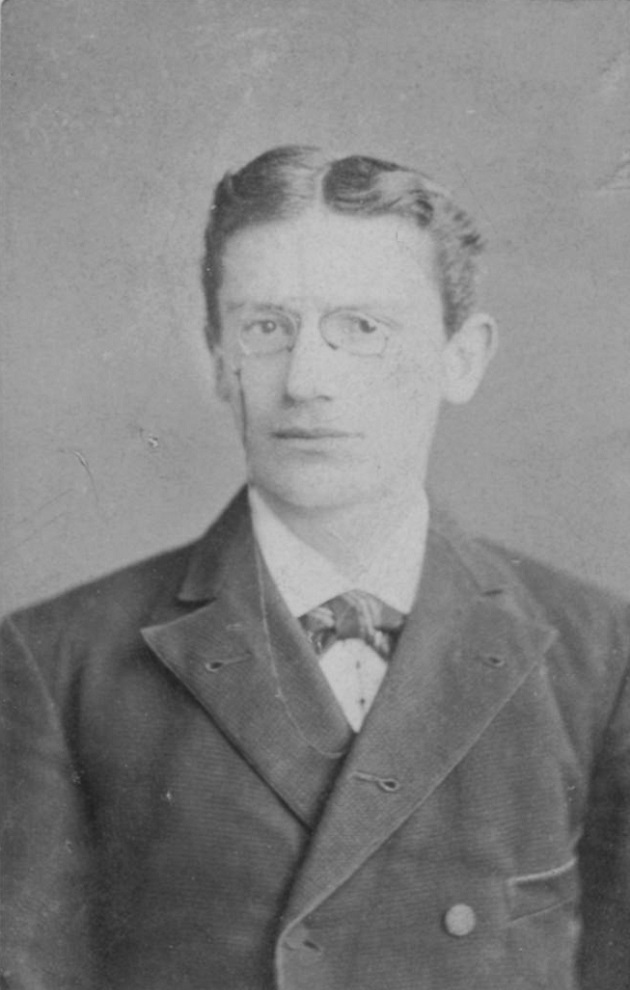
(10715)
Further to C.N. 10715, Michael Negele seeks more information about Lasker’s chess activities in 1886-88. He reports that his current knowledge may be summarized as follows:
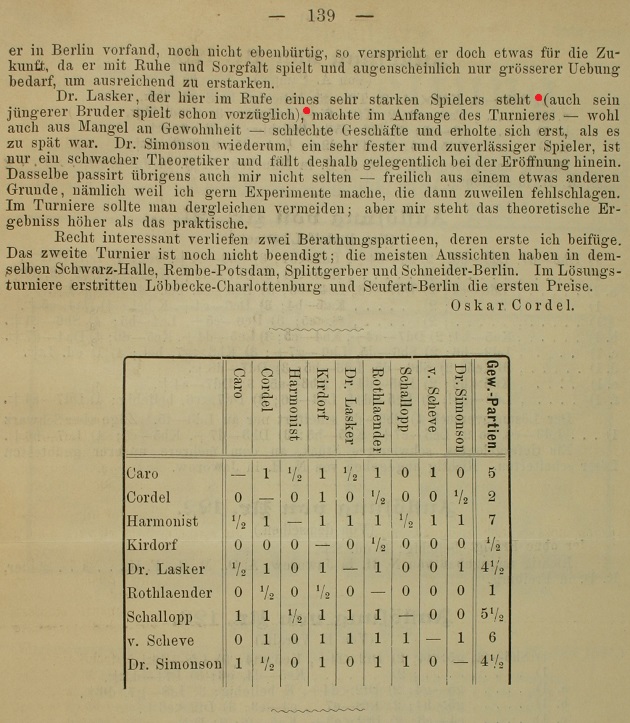
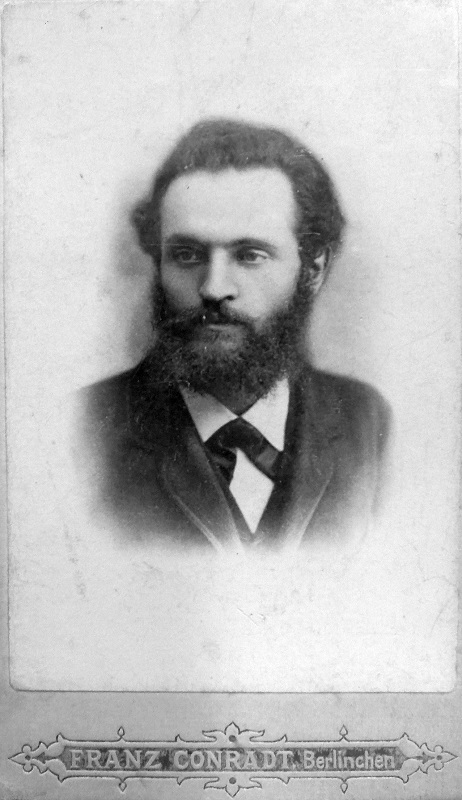
Berthold Lasker (Source: Niemeijer scrapbooks, Royal Dutch Library, The Hague)
Michael Negele, who has provided the above illustrations, concludes:
‘Is it possible to trace further corroboration of Lasker’s encounter with Tarrasch and, in particular, first-hand evidence which helps to date their two games? What is known of Lasker’s membership of the relatively obscure Berliner Schachklub and, more generally, can further information about the period 1885-88 be found in the local chess press or in later reminiscences by contemporaries? A search of the 1885-88 chess column of the Berlin Tägliche Rundschau (which Cordel appears to have edited from 27 May 1886 onwards) has produced no results.’
(10724)
From Peter Anderberg (Harmstorf, Germany):
‘An earlier reference to Emanuel Lasker with regard to chess is in the chess column of Tägliche Rundschau (Unterhaltungsbeilage), 30 March 1887, page 300, shortly before Easter 1887 (Easter Sunday that year fell on 10 April). Emanuel Lasker was called “Lasker II” as in Brüderschaft in 1888.
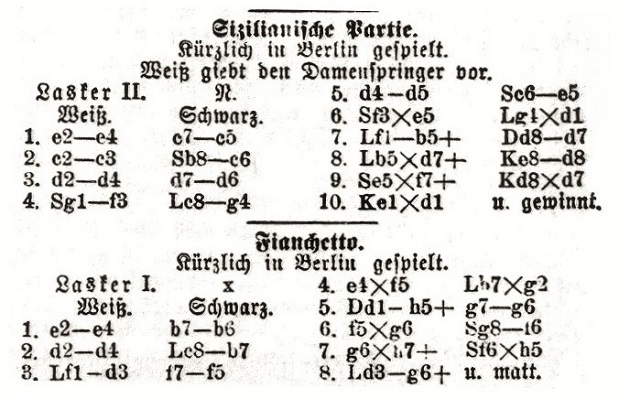
See also issue 35 of Kaissiber (December 2009), page 47.’
(10727)
Since the matter raised by Bernd Graefrath in C.N. 2192 (see page 338 of A Chess Omnibus) remains unresolved, his contribution is repeated here:
‘In my research on Emanuel Lasker I have found conflicting data on a move in the fourth game of his match with Tarrasch (Düsseldorf, 24 August 1908). Lasker made his famous rook manoeuvre from e7 via e5 to c5. On move 15 did the white queen go from d4 to c3 or from d4 to c4?
The earliest sources by both Lasker and Tarrasch give 15 Qd4-c3 (and 17 Qc3-b3), as is shown by the Olms volume Die Schachwettkämpfe Lasker-Tarrasch um die Weltmeisterschaft 1908 und 1916 (Zurich, 1981). But later sources give 15 Qd4-c4 and 17 Qc4-b3. These include Réti’s Die neuen Ideen im Schachspiel (Vienna, 1922), Tartakower’s Die hypermoderne Schachpartie (Vienna, 1924-25) and, even, a book by Lasker himself, Brettspiele der Völker (Berlin, 1931), page 79. I think that the older sources are more reliable, but how did the wrong move originate and spread?’
(10716)
The group photograph of Budapest, 1896 is fairly well known – see, for instance, page 5 of John C. Owen’s tournament book (Yorklyn, 1994) – but a particularly good version was published on page 793 of the 22 November 1896 edition of Vasárnapi Ujság (with Marco and Maróczy’s names transposed):
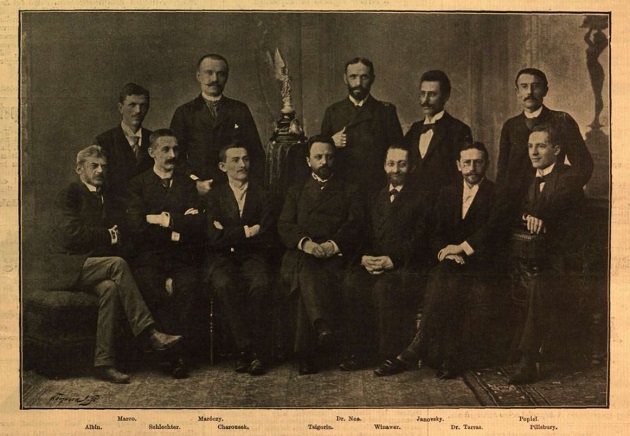
(10913)
George Koltanowski could forge an anecdote from the dropping of a paperclip, but even rudimentary verification of his ‘factual statements’ is likely to highlight his unreliability.
On pages 2-3 of the March 1969 Chess Digest he had a chatty article about Tarrasch which we have already criticized for stating a) that he encountered the German master at Meran, 1924 ‘in my early teens’, and b) that Tarrasch ‘played two matches for the world title with Lasker’. (Regarding the latter point, see too A Sorry Case.)
Koltanowski repeated the above inaccuracies in his syndicated column (e.g. in the Minnesota Star, 29 March 1969, page 19, as well as the El Paso Times 29 March 1969, page 21 and 19 October 1969, page 17) and in his section on Tarrasch on pages 48-51 of With the Chess Masters (San Francisco, 1972).
A further example of Koltanowski’s approach concerns the game accompanying that article on Tarrasch: their draw at the 1927 International Team Tournament in London. Koltanowski wrote in 1969 that a friend in Antwerp had recently sent him a number of old booklets and that in one of them, on the King’s Indian Defence, ‘there was one game that I had searched for a long time.’ In the above newspapers and in With the Chess Masters the reference was to a game that ‘I had tried to find for a long time’. In reality, that Tarrasch v Koltanowski game is easily found, having been published on pages 792-793 of L’Echiquier, December 1927 – with annotations by Koltanowski.
In large letters, the title of the Chess Digest article was ‘Koltys Coments’.
(10936)
From page 68 of Chess Panorama by William Lombardy and David Daniels (Radnor, 1975):
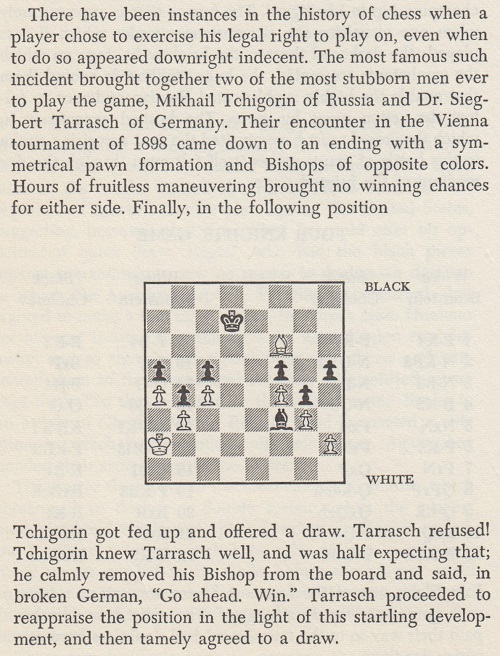
C.N. 3379 (see page 20 of Chess Facts and Fables) asked whether confirmation of this story could be found in contemporary sources.
Olimpiu G. Urcan writes:
‘When the game was published on page 8 of the 18 July 1898 edition of the London Standard, a column edited by Leopold Hoffer, who was reporting from Vienna, only a basic observation was appended to the score:
Twenty-three years later, when writing about the Lasker v Capablanca world title match in Havana, Gyula Breyer recounted the Chigorin/Tarrasch episode on page 9 of the 27 March 1921 issue of Bécsi Magyar Újság. He described Chigorin’s draw offer and the act of removing the bishop from the board as facts.
What was Breyer’s source for this assertion and how reliable was it?’
For an English version of Breyer’s article, see pages 672-674 of Gyula Breyer. The Chess Revolutionary by Jimmy Adams (Alkmaar, 2017).
(11324)
Page 3 of The World Chess Championship: 1951 Botvinnik v Bronstein by William Winter and R.G. Wade (London, 1951):
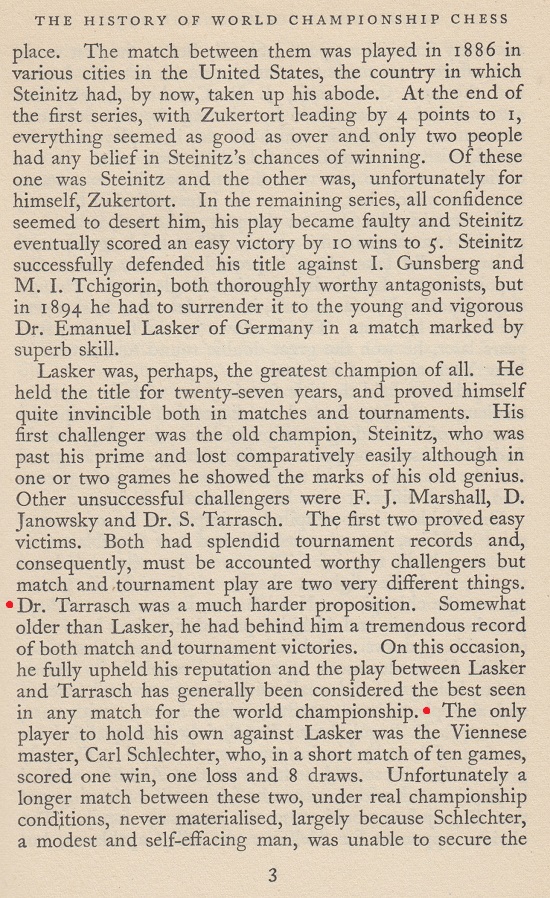
Given that Lasker defeated Tarrasch +8 –3 =5, this account seems generous to Tarrasch. As regards the quality of play, James Mortimer expressed a different view on page 8 of the Daily Mail, 15 September 1908:
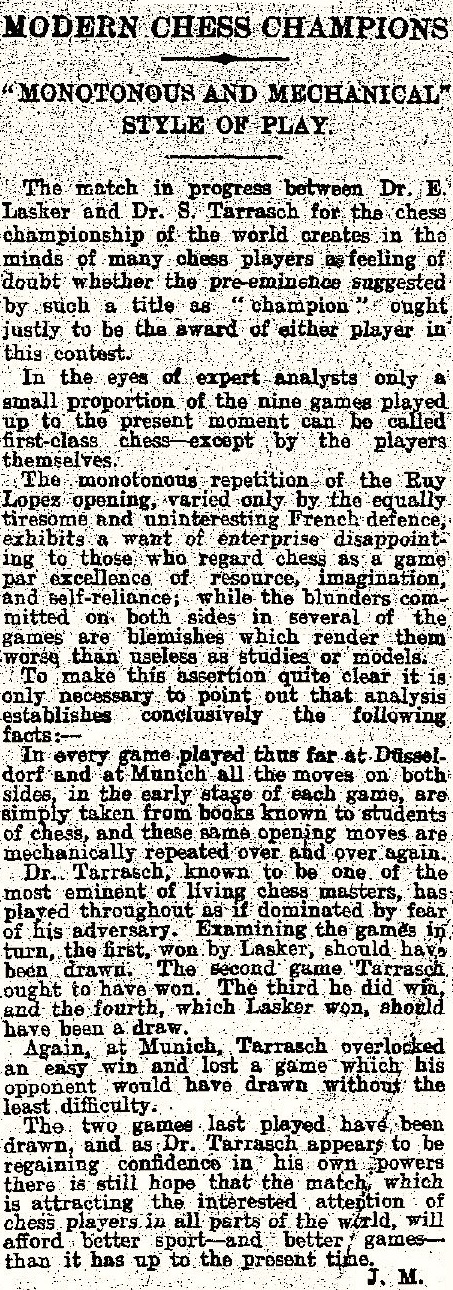
(11094)
From pages 486-487 of the November 1908 BCM:
‘Thus the match, which the German Schachbund took such pains to bring about, was veritably an encounter of giants, and justified the widespread interest that was taken in it. Surely never before has the daily press devoted so much attention to our game. All over the world – even in far-away Japan – the course of the match was followed with close interest, and no doubt the circle of chessplayers has been greatly widened by the unique advertisement thus given to the game.
Apart from the heavy monetary prize at issue, both players had a still greater incentive to exert their best efforts in the reputation that they staked. Until the verdict of an actual encounter with Tarrasch had been given, the German chess world was loth to concede the title of world champion to Lasker. To the majority of German chessplayers Dr Tarrasch appeared invincible, and it must be confessed he himself seemed to share the opinion. Lasker, of course, had the glory and the pecuniary value of his title to defend.’
(11145)
Discussing the Lasker v Tarrasch world title contest, page 247 of Lasker move by move by Zenón Franco (London, 2018) has the phrase ‘the “Match of the Century”, as it was called at the time’.
Called by whom?
(11139)
Page 298 of Z. Franco’s above-mentioned book on Lasker shows his awareness that the only world title match between Lasker and Janowsky was in Berlin in late 1910.
However, the following is on page 23:
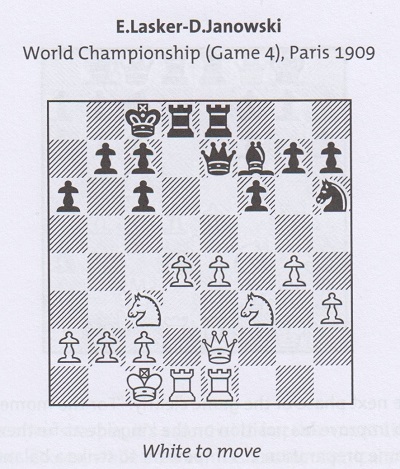
This was merely the last encounter in a four-game match in May 1909. From the report on page 167 of the May 1909 issue of La Stratégie:
‘... M. Nardus, le généreux promoteur du match-revanche Janowski-Marshall, offrit au Champion de subventionner un match entre lui et D. Janowski. A la suite de quelques pourparlers, une lutte importante fut remise à plus tard, mais les conditions d’une courte rencontre immédiate furent ainsi établies: quatre parties seulement; les nulles comptant pour demi-point; 1.000 fr. au vainqueur plus 750 fr. à chacun des deux maîtres.
Commencé le 12 mai en la villa Léa, à Suresnes, ce match s’est terminé le 22 du même mois, avec le résultat négatif de deux parties gagnées par chacun.’
The venue was the residence of Léonardus Nardus. See too Lasker v Janowsky, Paris, 1909.
(11140)
The conclusion of Tarrasch’s Vorwort (Preface) to Das Schachspiel (Berlin, 1931), pages 3-4:
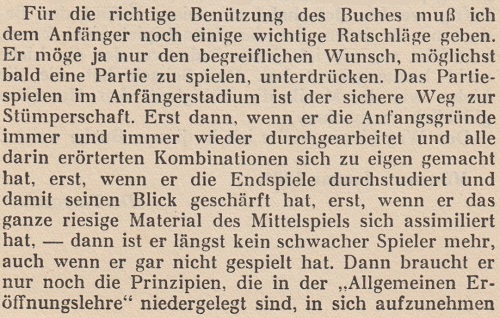
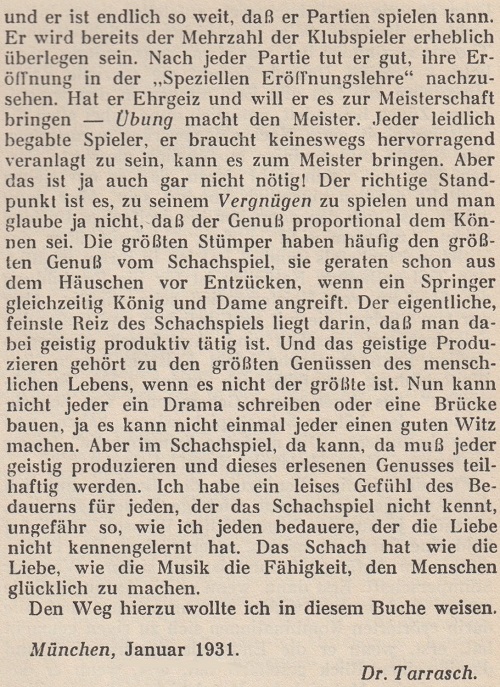
From the English translation, The Game of Chess (London, 1935), pages x-xi:

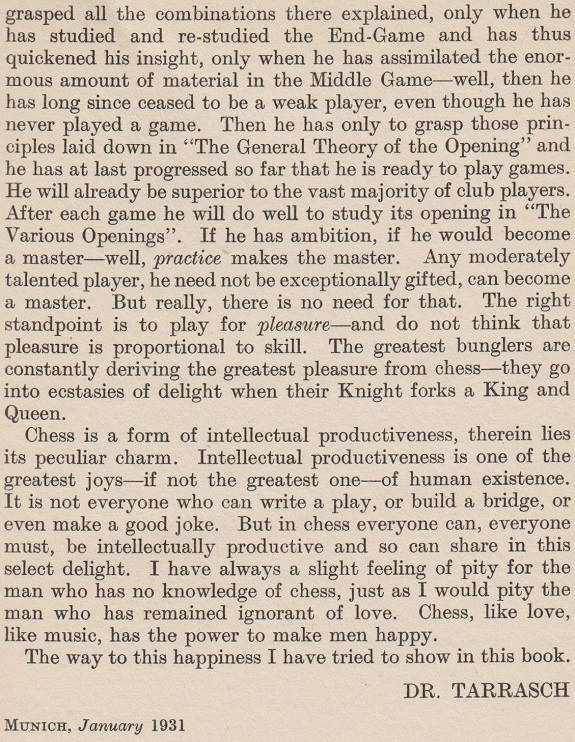
Attention is drawn to Tarrasch’s advice to the beginner in the second and third sentences:
‘His very understandable desire to play a game as soon as possible he must suppress. To play games while still in the beginner’s stage is the surest way to become an unskilful player.’
Leaving aside the validity or otherwise of that advice, we wonder whether any other prominent chess teachers have written similarly.
(11327)
‘I had a toothache during the first game. In the second game I had a headache. In the third game it was an attack of rheumatism. In the fourth game, I wasn’t feeling well. And in the fifth game? Well, must one have to win every game?’
Anyone using a search-engine for that remark, or a slightly different wording, will be presented with countless webpages. Most ascribe the comment to Tarrasch, some to Tartakower, and none to a precise source.
In print, it is no surprise to find A. Soltis writing the following sourcelessly on page 11 of Chess Life, June 1990:
‘And it was Tartakower who had perhaps the final word on excuses. Asked how he could lose so many games in a row at one tournament he replied: “I had a toothache during the first game, so I lost. In the second game I had a headache, so I lost. In the third game an attack of rheumatism in the left shoulder, so I lost. In the fourth game I wasn’t feeling at all well, so I lost. And in the fifth game – well, must I win every game in a tournament?”’
An earlier version was related by Harry Golombek on page 91 of the April 1953 BCM in a report on that year’s tournament in Bucharest, at which he ‘had a really dreadful phase’:
‘If asked to account for these six successive losses I think I cannot do better than to quote Dr Tartakower who on a similar occasion was explaining why he lost five games in a row in an international tournament. “The first”, he said, “I lost because of a very bad headache; during the second I didn’t feel at all well; I was afflicted by rheumatic twinges throughout the third; in the fourth I suffered acute toothache; and the fifth – well, must one win every game in a tournament?”’
Readers may care to imagine themselves entrusted with editing a chess quotations anthology. What to do with this ‘final word on excuses’? Omit it owing to the lack of a source? Give in detail the various versions and attributions? Plump and hope for the best (the process described in C.N. 9887)?
An attempt may first be made to establish when, if ever, Tartakower or Tarrasch lost five consecutive tournament games, and when the story was first attributed to, if not voiced by, either of them.
(11994)
João Pedro S. Mendonça Correia (Lisbon) draws attention to this annotation on page 217 of the Caissa Editions translation (Yorklyn, 1993) of Tarrasch’s book on St Petersburg, 1914 and wonders whether any personal acrimony underlies the reference to billiards:
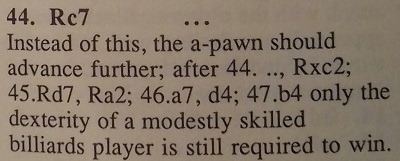
From the original German edition (page 151):
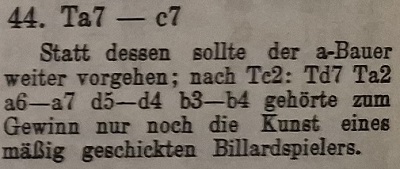
The game was Capablanca v Marshall in round four of the final section: 1 e4 e5 2 Nf3 Nf6 3 Nxe5 d6 4 Nf3 Nxe4 5 Qe2 Qe7 6 d3 Nf6 7 Bg5 Be6 8 Nc3 h6 9 Bxf6 Qxf6 10 d4 Be7 11 Qb5+ Nd7 12 Bd3 g5 13 h3 O-O 14 Qxb7 Rab8 15 Qe4 Qg7 16 b3 c5 17 O-O cxd4 18 Nd5 Bd8 19 Bc4 Nc5 20 Qxd4 Qxd4 21 Nxd4 Bxd5 22 Bxd5 Bf6 23 Rad1 Bxd4 24 Rxd4 Kg7 25 Bc4 Rb6 26 Re1 Kf6 27 f4 Ne6 28 fxg5+ hxg5 29 Rf1+ Ke7 30 Rg4 Rg8 31 Rf5 Rc6 32 h4 Rgc8 33 hxg5 Rc5 34 Bxe6 fxe6 35 Rxc5 Rxc5 36 g6 Kf8 37 Rc4 Ra5 38 a4 Kg7 39 Rc6 Rd5 40 Rc7+ Kxg6 41 Rxa7 Rd1+ 42 Kh2 d5 43 a5 Rc1 44 Rc7 Ra1 45 b4 Ra4 46 c3 d4 47 Rc6 dxc3 48 Rxc3 Rxb4 49 Ra3 Rb7 50 a6 Ra7 51 Ra5 Kf6 52 g4 Ke7 53 Kg3 Kd6 54 Kf4 Kc7 55 Ke5 Kd7 56 g5 Ke7 57 g6 Kf8 58 Kxe6 Ke8 59 g7 Rxg7 60 a7 Rg6+ 61 Kf5 Resigns.
Tarrasch also criticized 46 c3, appending a question mark.
Below is the position after White’s penultimate move, 60 a7:
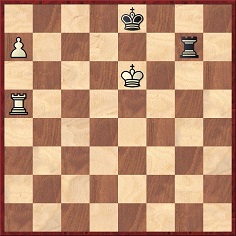
Tarrasch called Marshall’s 60...Rg6+ a Racheschach. It is not a ‘spite check’ strictu sensu, given that two of the three possible king moves by White lose.
(11997)
Further material:
In addition to other references to Tarrasch in the Factfinder, including games against Kürschner and Nissl, the following may be noted:
- Concerning Tarrasch as, allegedly, one of the first five grandmasters: see Chess Grandmasters.
- The Tarrasch Defence in the Queen’s Gambit: see page 101 of Chess Explorations, pages 115-116 of Kings, Commoners and Knaves, page 148 of A Chess Omnibus and the Chess Jottings feature article.
- With respect to references to the Queen’s Gambit Declined being akin to chamber music, see C.N.s 9304 and 9313.
- For two endgame studies by Tarrasch which we gave in Kingpin in 1993, see pages 13-14 of Kings, Commoners and Knaves.
- There are also many references to Tarrasch in ‘All Rook Endgames are Drawn’.

Addition on 3 November 2024:
Page 146 of the American Chess Magazine, October 1898:

Acknowledgement for the scan: Cleveland Public Library
Shortly before the start of the Carlsbad, 1907 tournament, Emanuel Lasker wrote on page 10 of the New York Evening Post, 7 August 1907:
‘The only notable absentee is Dr Tarrasch, who has been hailed as “tournament champion” since he won the “champions’ tournament” at Ostend. What title will be conferred on the winner of this tournament [Carlsbad] is rather puzzling at present.
As the list of entries includes all those who played in the “champions’ tournament”, with the exception of Dr Tarrasch, and includes Maróczy and many of the ingenious young players who are coming to the front, the Carlsbad tournament must be considered to be of the same class as that of Ostend, and it seems illogical to award the title of “champion” to the winner of one tournament and withhold it from the winner of the other.’
(12083)
Javier Asturiano Molina asks:
‘Is it known when and by whom Siegbert Tarrasch was given the title “Praeceptor Germaniae”?’
The following appears in Tarrasch’s Foreword to the second edition of his Dreihundert Schachpartien (Leipzig, 1909), page vii:
‘In den Münchener Neuesten Nachrichten hat Herr v. Parish zu meinem Erstaunen erklärt, daß ich längst den Ehrennamen “Praeceptor Germaniae” trage.’
We note the following on page 13 of the 10 December 1905 edition of the Munich newspaper:

‘Der Deutsche Schachbund hat das Tarraschbüchlein allen seinen Mitgliedern zum Geschenk gemacht und dadurch dokumentiert, daß es zu dem eisernen Bestande jedes Schachfreundes gehören sollte. Auch wir können nur wünschen, daß durch eine möglichst weite Verbreitung und durch ein ernstes Studium dieses Werkes die Vertiefung des Schachs in ähnlicher Weise gefördert werde, wie es durch des gleichen Autors „300 Partien“ geschehen, die ihm in der ganzen deutschen Schachwelt den Ehrentitel eintrugen: praeceptor Germaniae! v. P.’
(12107)
Latest update: 16 August 2025.
To the Chess Notes main page.
To the Archives for other feature articles.
Copyright: Edward Winter. All rights reserved.